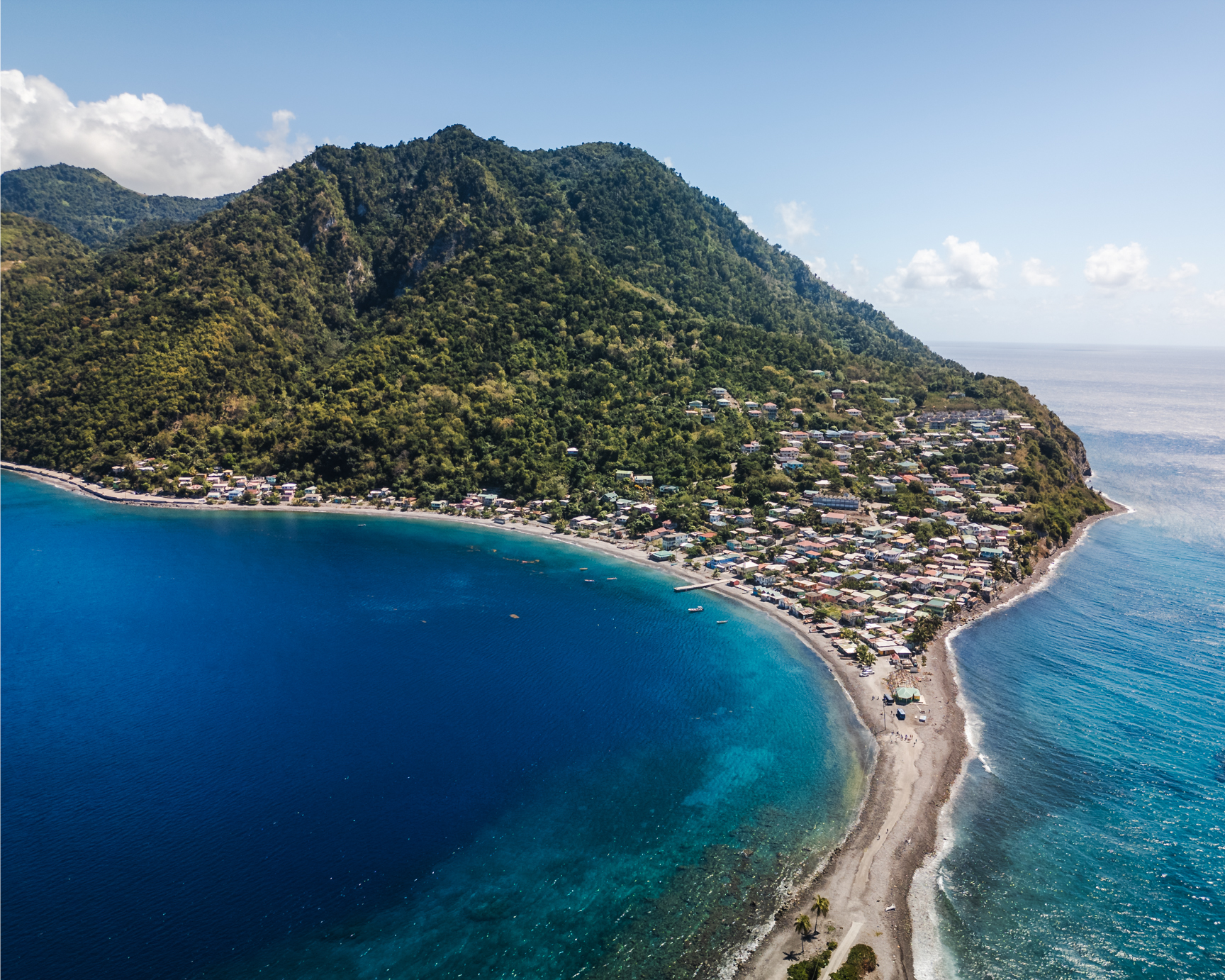
Dominica is an absolute hidden gem in the Caribbean. Miles of intact rainforest, idyllic waterfalls, pristine coral reefs, and sapphire blue water are just a few pieces of paradise the island has to offer.
Still a well-kept secret, Dominica flies under most tourist’s radars. What it lacks in white sand beaches and all-inclusive hideaways, it makes up for in raw untouched beauty. Rugged terrain and minimal infrastructure make much of the island unreachable. Only a few weathered roads snake around the island and the mountainous landscape is too untamed in many places to put in hiking trails. But this inaccessibility, for me at least, is part of the island’s charm.
In search of a tropical winter escape, we decided to trade snowfall for scenic ocean views and the chance to explore an underrated corner of the Caribbean. With the perfect mix of outdoor experiences, incredible birding, and good food, Dominica is an ideal place to spend a week.
This guide contains my favorite things to see and do in Dominica, including some tips and tricks to help you get around. Happy reading!
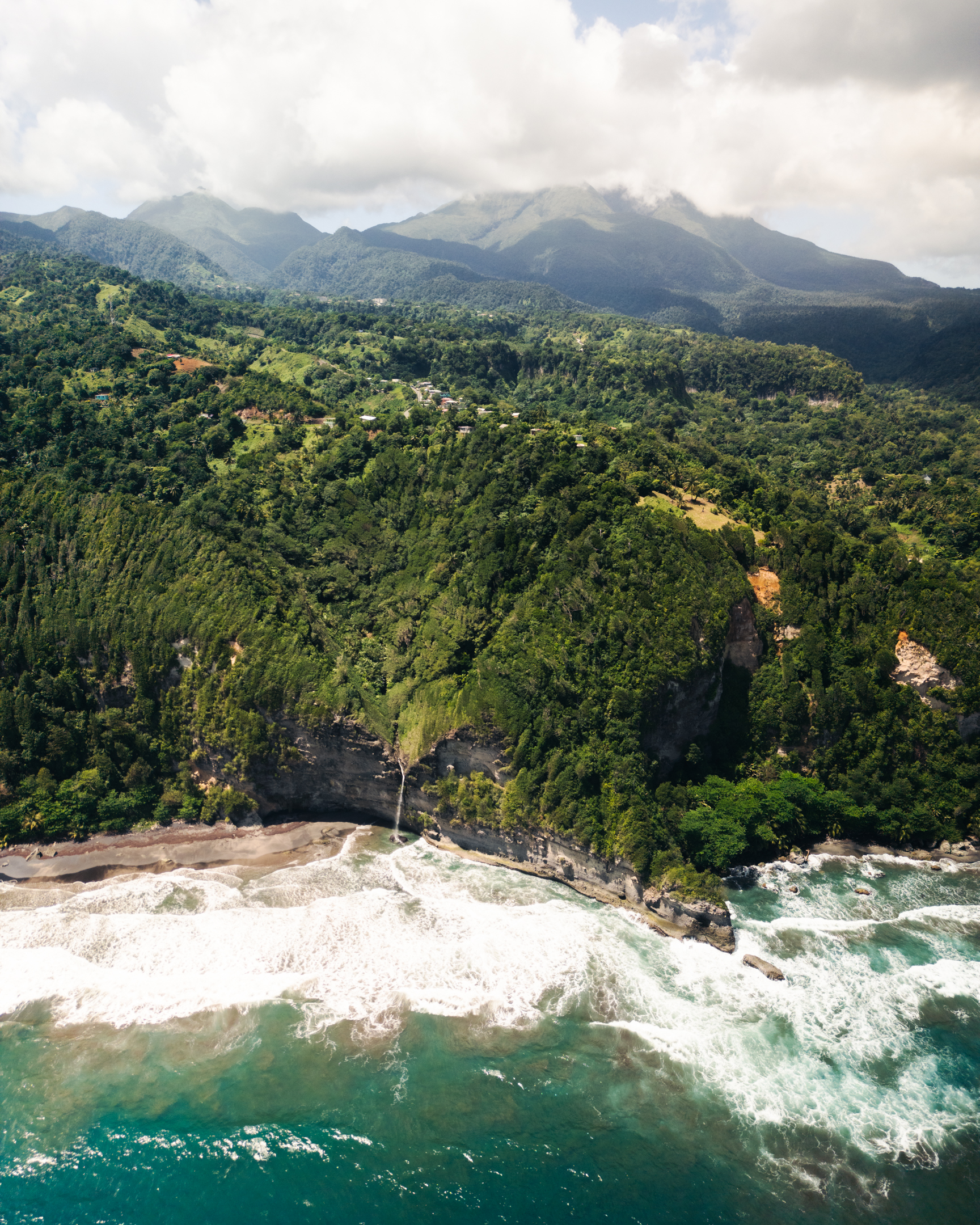
An Introduction to Dominica
If you’re searching for a stunning destination that combines outdoor adventures, breathtaking landscapes, and a truly unique experience, then Dominica is the place for you!
Located in the eastern Caribbean Sea, Dominica (pronounced daa-muh-nee-kuh) is a small island nation in the Windward Island chain of the Lesser Antilles archipelago. Nestled between Guadeloupe to the north and Martinique to the south, Dominica is not so much remote as it is overlooked.
Often mistaken for the Dominican Republic, these two similar-sounding islands could not be more different. So much of what you find on other Caribbean islands, you won’t find on Dominica. All-inclusive resorts, chain restaurants, and coach buses are almost non-existent – though there is a Burger King in Roseau. Instead, you’ll find quaint, boutique hotels perched along the hillsides and holes-in-the-wall that serve seafood caught fresh that morning.
The Kalinago – Dominica’s indigenous people – originally named the island Waitukubuli meaning “tall is her body”. It is a fitting name for such a mountainous place. Nicknamed the “Nature Island of the Caribbean”, Dominica abounds with lush rainforests, geothermal hot springs, and rare flora and fauna. The critically endangered Sisserou parrot – the island’s national bird – is only found on Dominica.
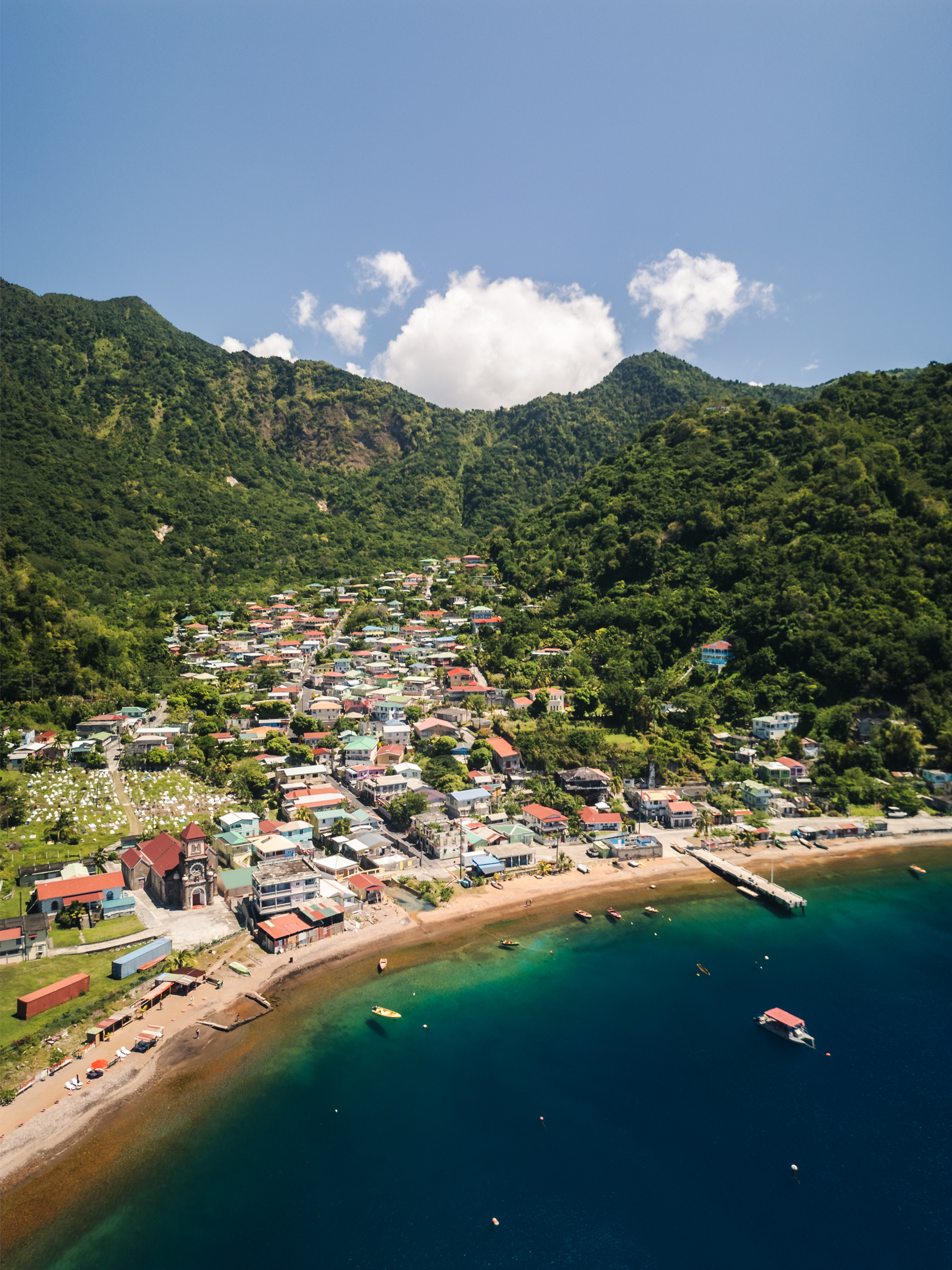
How to Get to Dominica?
Though still relatively under the radar, word is getting out about how spectacular Dominica is. American Airlines operates multiple direct flights weekly from Miami International Airport. This is where you’ll likely connect through if you’re coming from the US. Smaller regional airlines connect more frequently from neighboring islands like Barbados, Puerto Rico, Antigua, and several others. If you plan to island hop, consider taking the ferry. Though I heard that service is less reliable than traveling by air.
There are two main airports on the island. Most international flights will arrive through Douglas-Charles Airport (DOM). The much smaller Canefield Airport (DCF) primarily provides seasonal and charter flights rather than regular international service.
- Douglas-Charles Airport (DOM) is in the northeast of Dominica near Marigot
- Canefield Airport (DCF) is in the southwest of Dominica just north of Roseau
Car rentals are available at or near both airports. Most accommodations on the island are at least an hour drive from the Douglas-Charles Airport. The picturesque routes along the coast to Portsmouth or through the verdant mountain interior to Roseau make the long drive worth it!
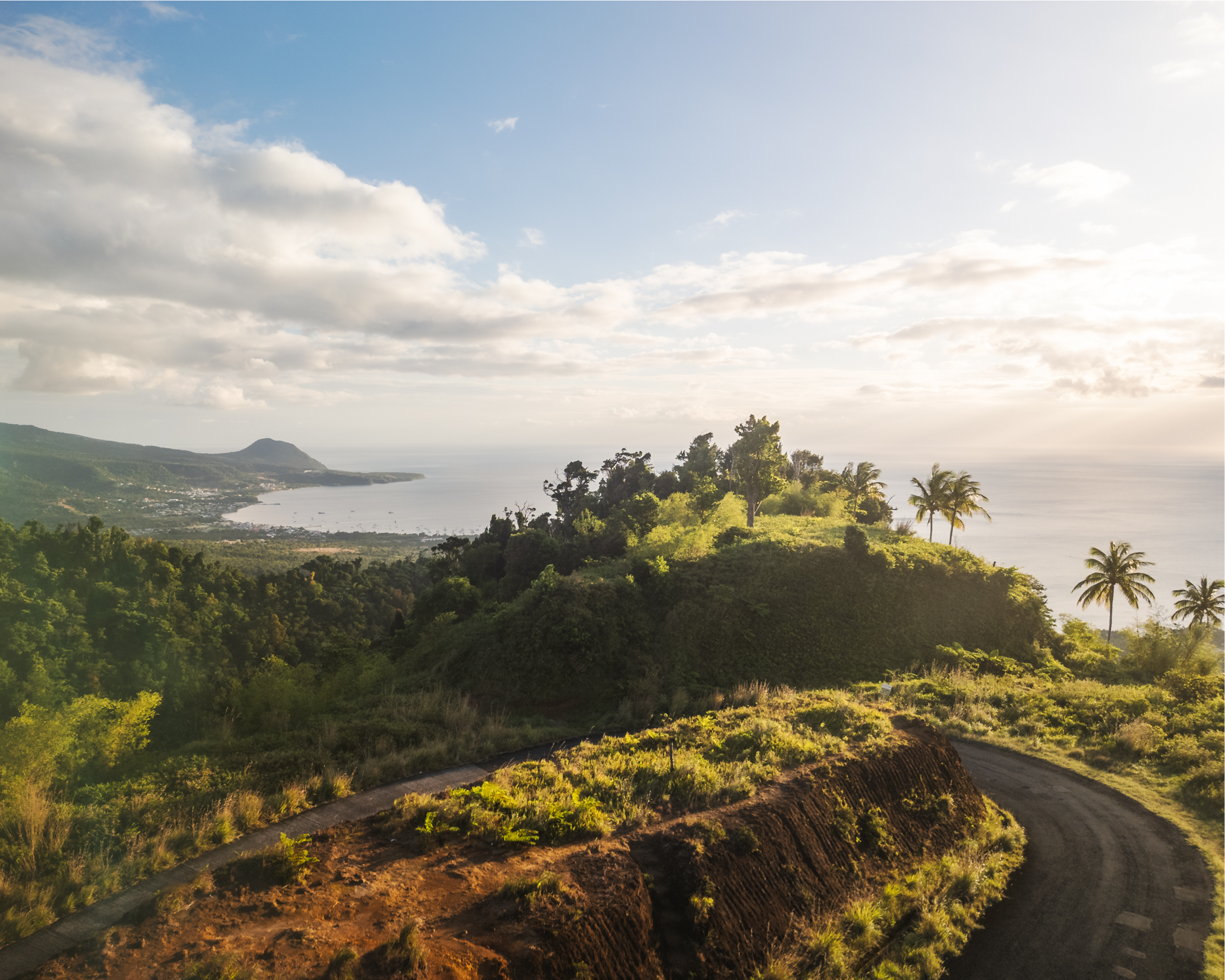
Do You Need to Rent a Car in Dominica?
The bus system in Dominica is reliable but frequency of service is highly dependent on when and where you want to go. Since the schedule is based on when people are going to and from work or school, you’re forced to fit your travel within that timetable. Stops also tend to be in the center of town, requiring you to walk from the drop-off point to your final destination – not ideal if there’s a lot on your must-see list. You can call a taxi or hire a driver for the length of your stay but that gets pricey fast. All things considered, renting a car offers the most freedom and flexibility of movement.
We rented a car from Happy Car Rentals but there are plenty of others to choose from around the island. The price was competitive, the reviews were great, and they were conveniently located at the airport in Marigot.
Cars can be in short supply on the island between high season and local demand. Be sure to book early!
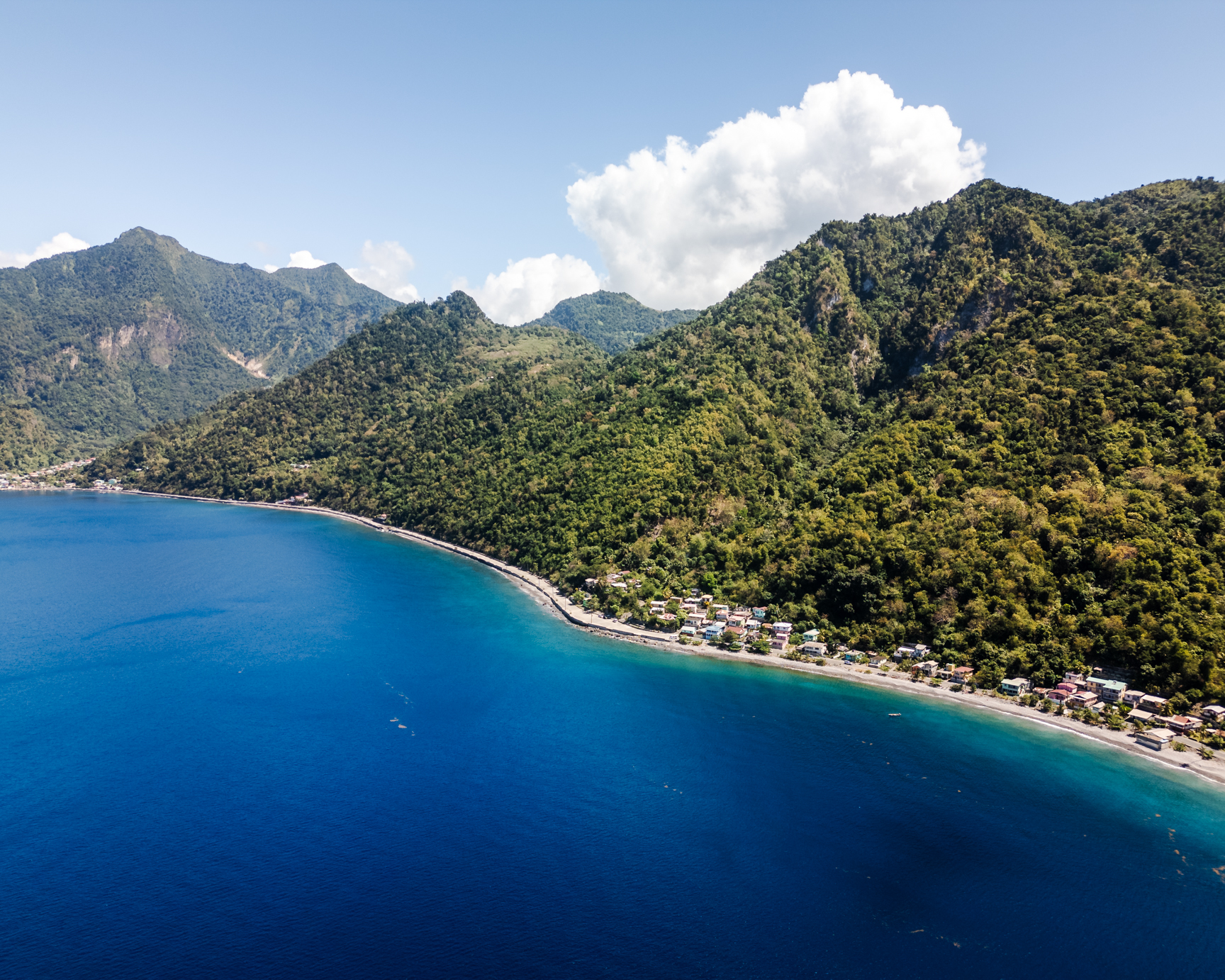
Tips for Driving in Dominica
Verify your reservation details
When making your reservation, be aware that both right-hand and left-hand drive – as well as manual and automatic – vehicles are available. You’ll want a car with the steering wheel on the right (aka right-hand drive) as cars are driven on the left-side of the road in Dominica. Make sure to check the details in the listing before booking!
Have your paperwork in order
If you are coming from the US like we are, you’ll need an International Driving Permit (IDP). It is required to drive legally in Dominica. The process is straightforward and can be done at any AAA prior to leaving for your trip. The rental agency will ask you to present your US driver’s license and International Driving Permit. You will also have to pay EC$30 (around $12) for a one-month permit to drive in the country. Don’t forget to keep those documents handy while you’re out on the road!
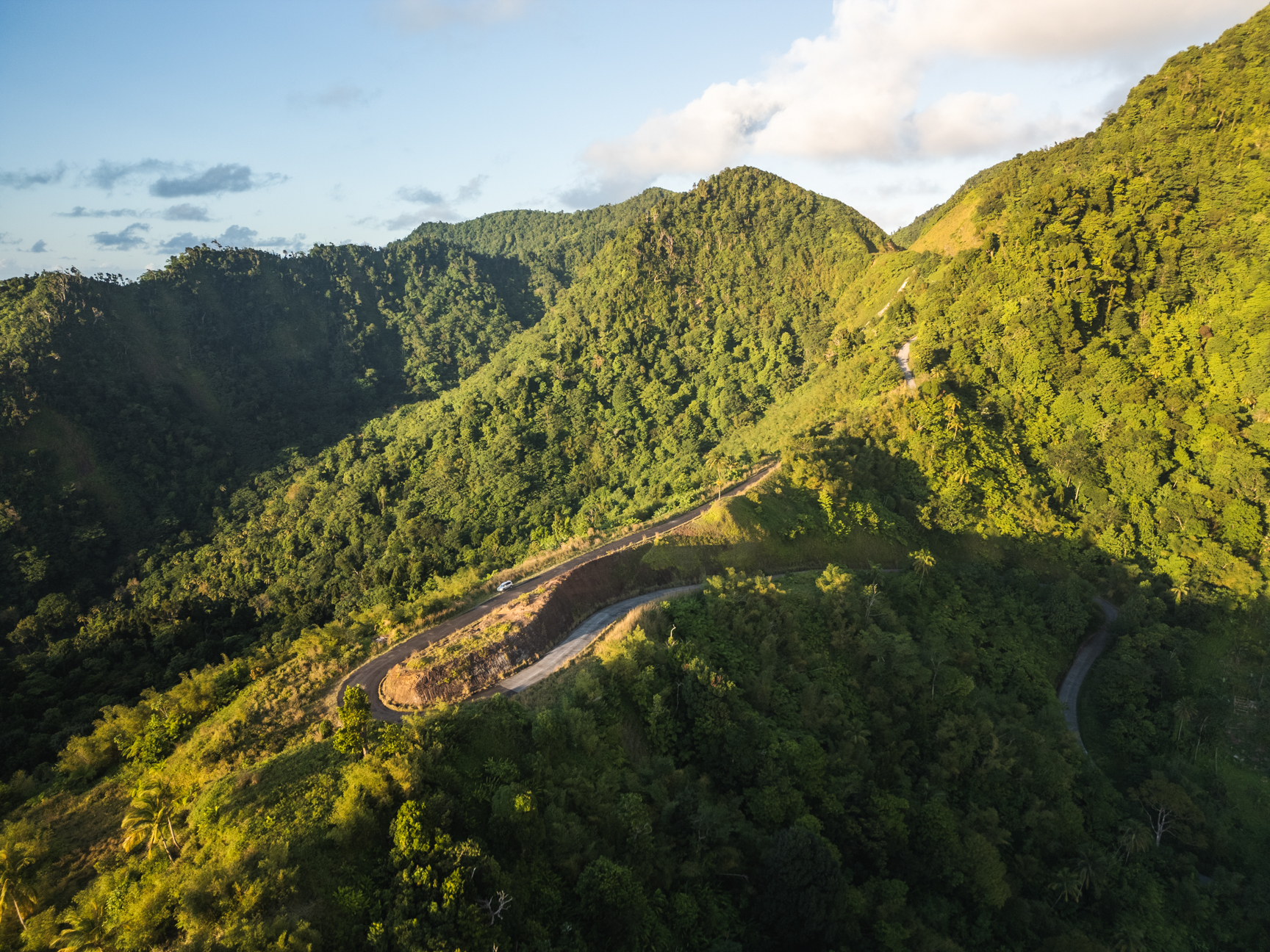
Beware and be aware
Aside from navigating driving on the opposite side of the road from what you might be used to, you will have to contend with myriad other obstacles if you choose to drive in Dominica. Traffic lights are few and far between, signs are almost non-existent, and roads are poorly lit. Pedestrians, motorcyclists, and livestock regularly traverse the already narrow roads and can appear out of nowhere. You’ll find few guardrails on the island even though there are many sheer drop-offs, which are often covered by vegetation. Don’t pull over unless you see a designated area. Beware of blind corners, steep hairpin turns, concrete drainage ditches, and potholes, especially at night. Slow and steady wins the race here. Pay attention and keep your wits about you, you’ll be just fine.
Get comfortable with honking
Unlike in the US, beeping usually isn’t a sign of anger or displeasure – though the meaning of one long, drawn out honk is the same everywhere. Coming around a blind corner at night on an unlit stretch of highway? Two short honks. See someone you know? More short honks. Just want to say hi to passersby? Beep away!
Parking on Dominica is a challenge
In most cases, it’s non-existent. Most people just park right in front, even if that means blocking an entire lane of traffic. If you do manage to find somewhere to leave your vehicle, it’s often uneven, unpaved, potholed, or some combination thereof. Not to mention a hike to wherever your destination is. For the most part we just did as the locals do and pulled our car off to the side of the road when there was no parking.
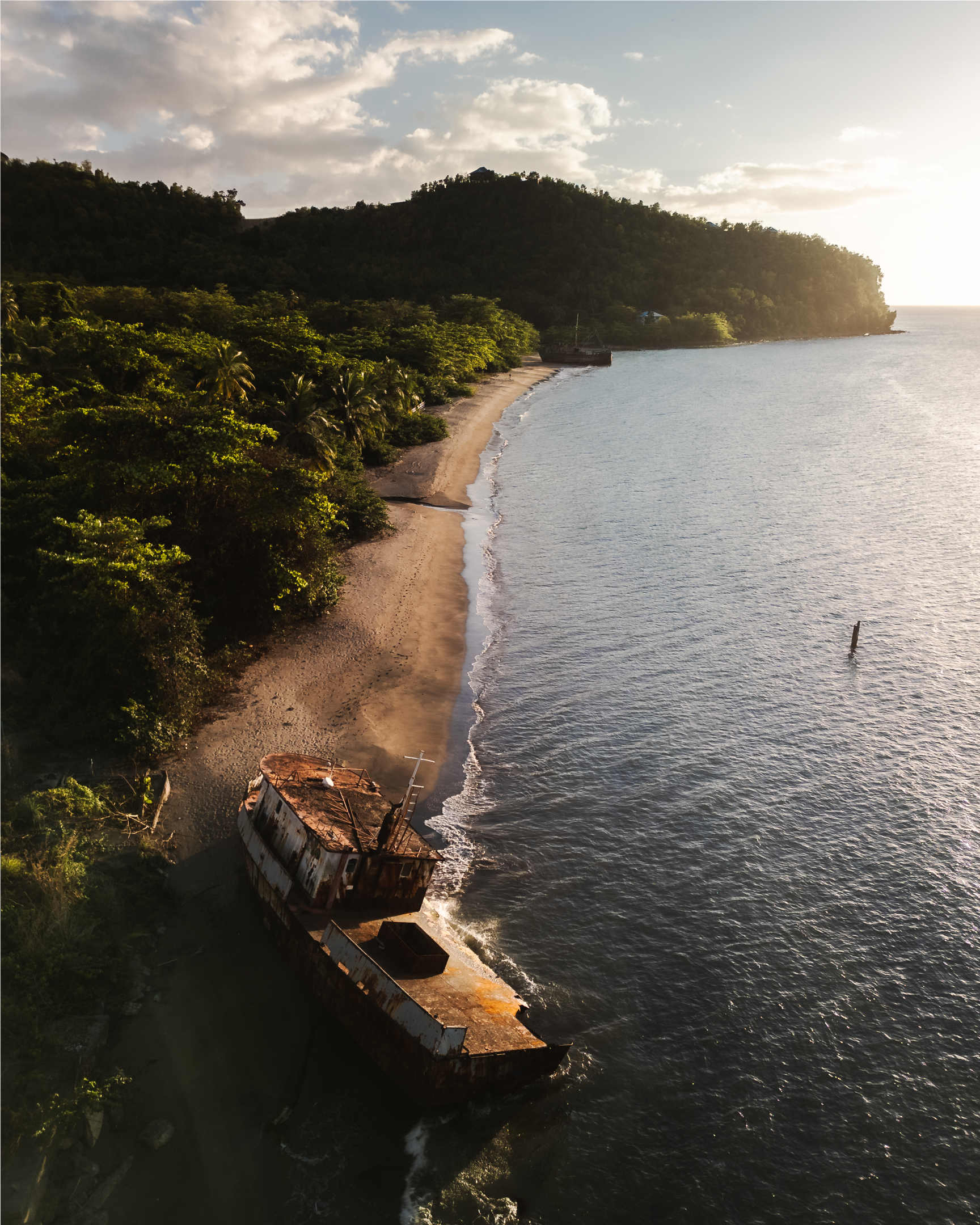
Where is the Best Place to Base Yourself in Dominica?
For such a small island there is an impressive selection of accommodations, from luxury cliffside bungalows and off-grid eco-retreats to quaint beachfront cottages and oceanfront dive hotels in the heart of the nation’s capital.
The type of lodging you choose will depend on the type of trip you’re planning. If you want to relax and take full advantage of the on-site amenities, the boutique establishments on Dominica are just the ticket. Whereas if you’re there to hike or dive, you might want to pick a base that is close by the activities on your itinerary.
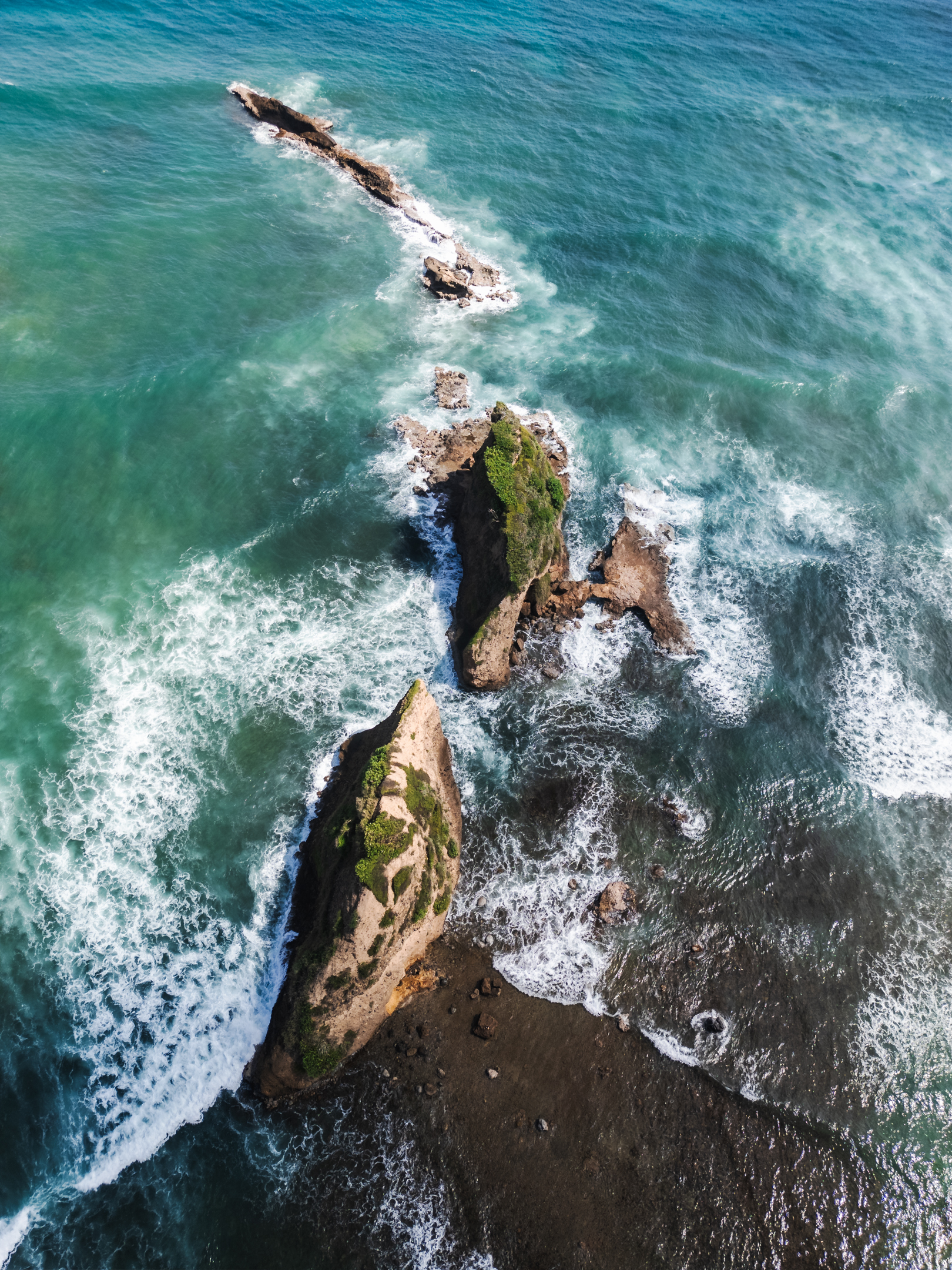
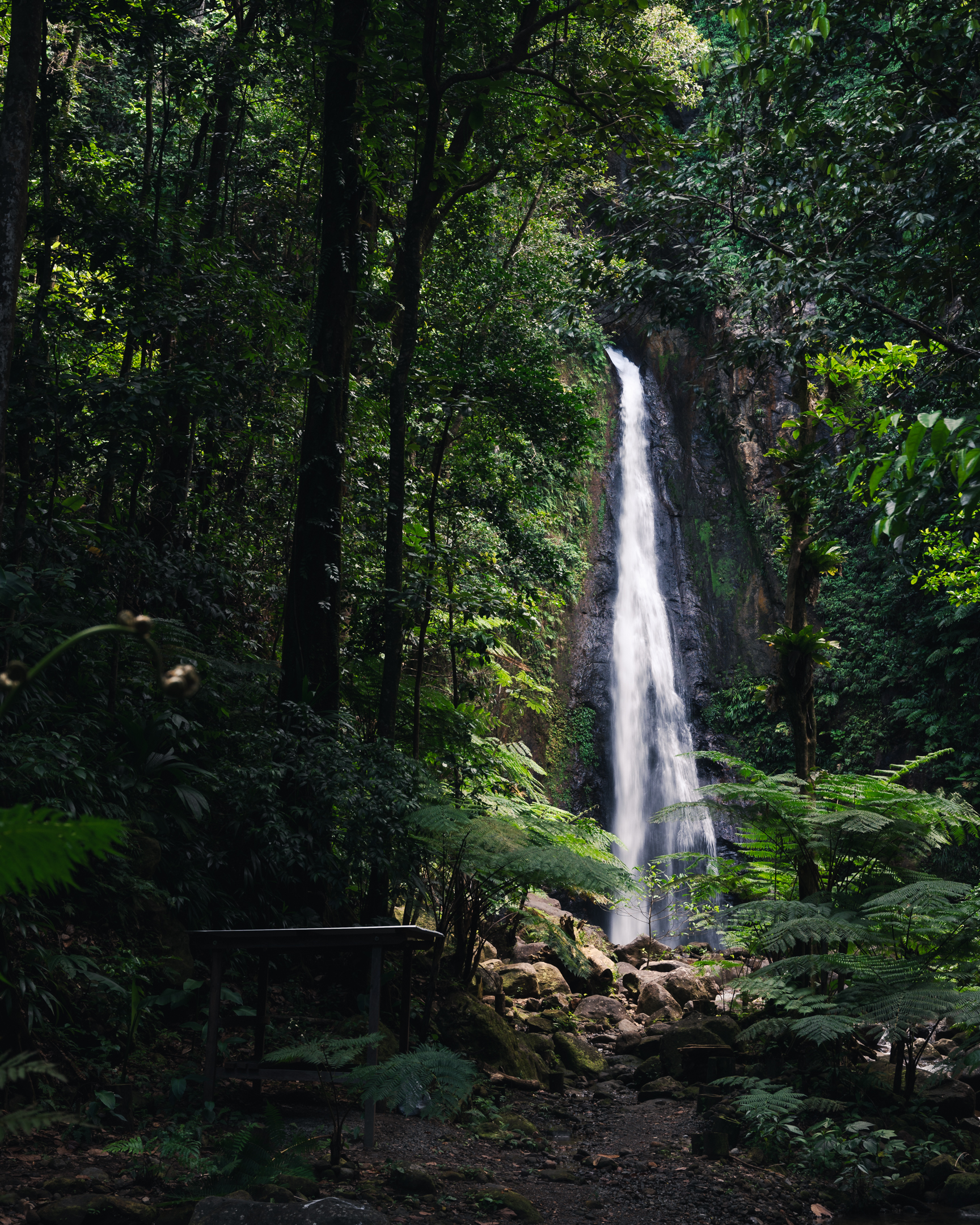
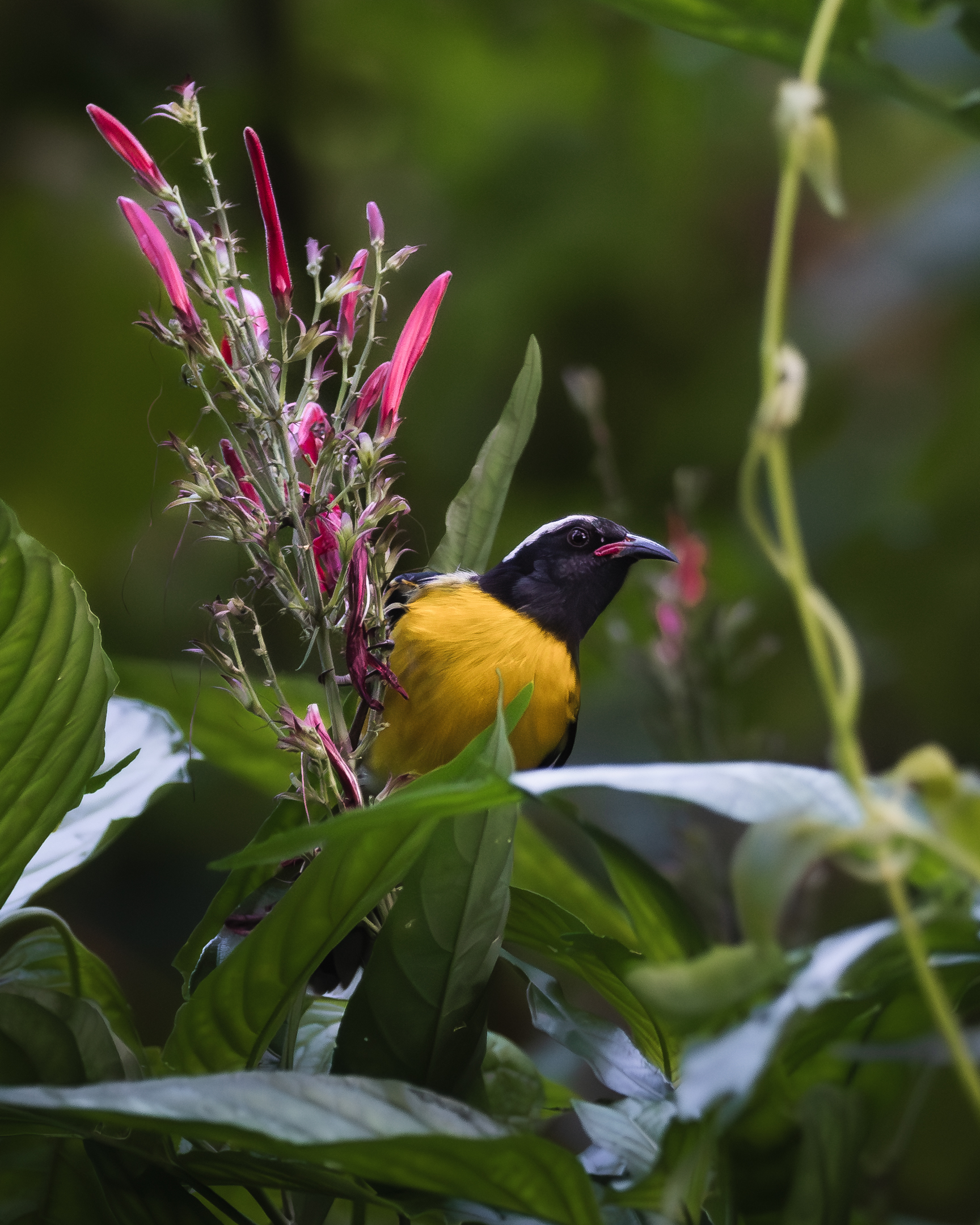
We stayed at Hotel the Champs in Portsmouth for the entire week. Dominica’s second largest town on the northwest coast has its fair share of restaurants, palm-dotted beaches, and jungle hiking trails. Away from the hustle and bustle of Roseau, there is plenty to explore here. Indian River, Cabrits National Park, and the Syndicate Nature Trail are all located nearby. Access to the northern and eastern coasts is quite easy, with plenty of scenic pull-offs to make the windy drive worthwhile.
On a future visit I’d stay in the southern portion of the island near Soufriere. A stone’s throw from Roseau, it has incredible diving and is close to many of the island’s most popular landmarks. Portsmouth was far enough away from Roseau to feel secluded but between the cruise traffic and significant commute we just didn’t end up seeing much in the south of the island. Roseau also has many more dining options than Portsmouth, which I’d love to take advantage of on my next trip.
The Best Things to Do on Dominica
Go birdwatching with Dr. Birdy
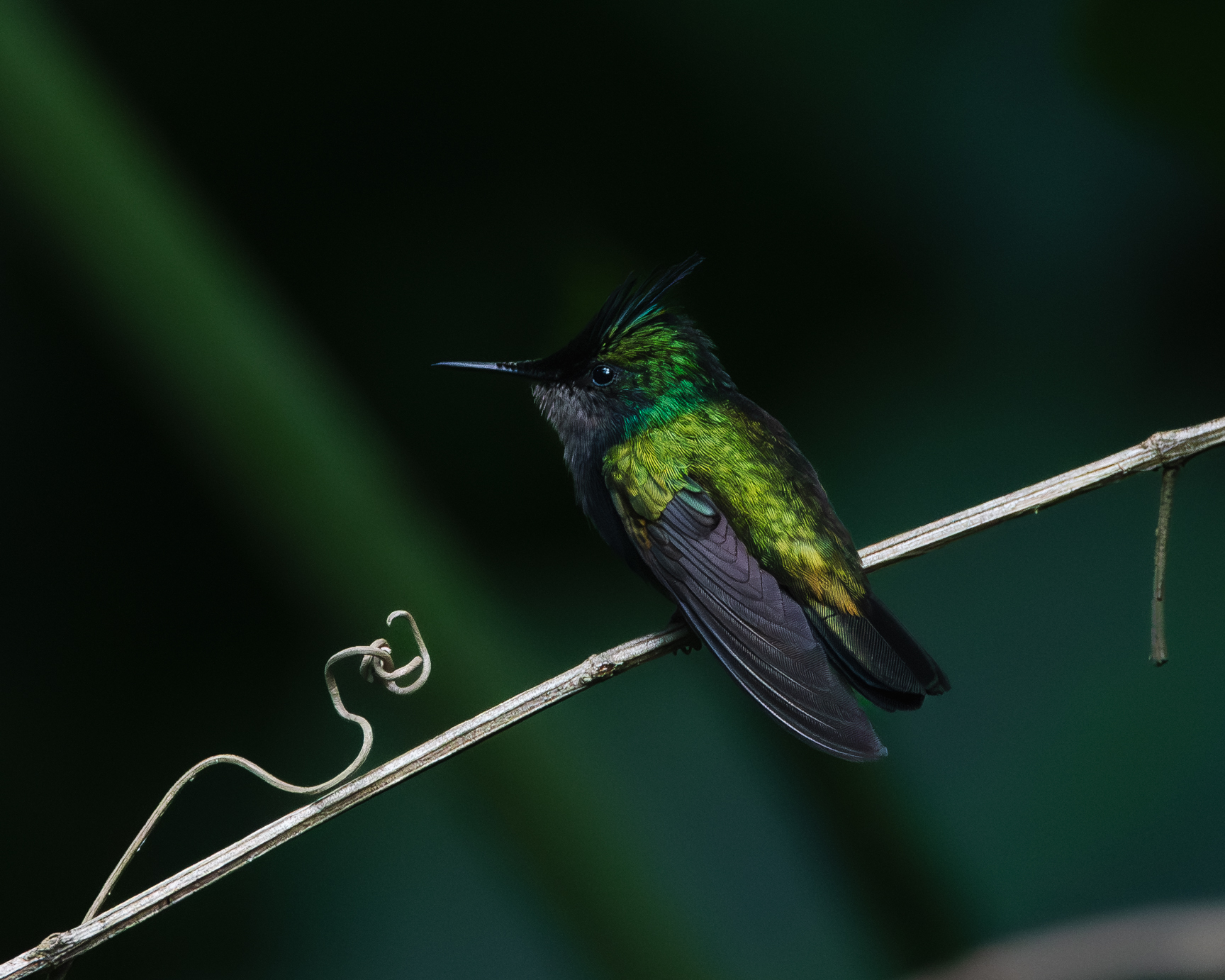
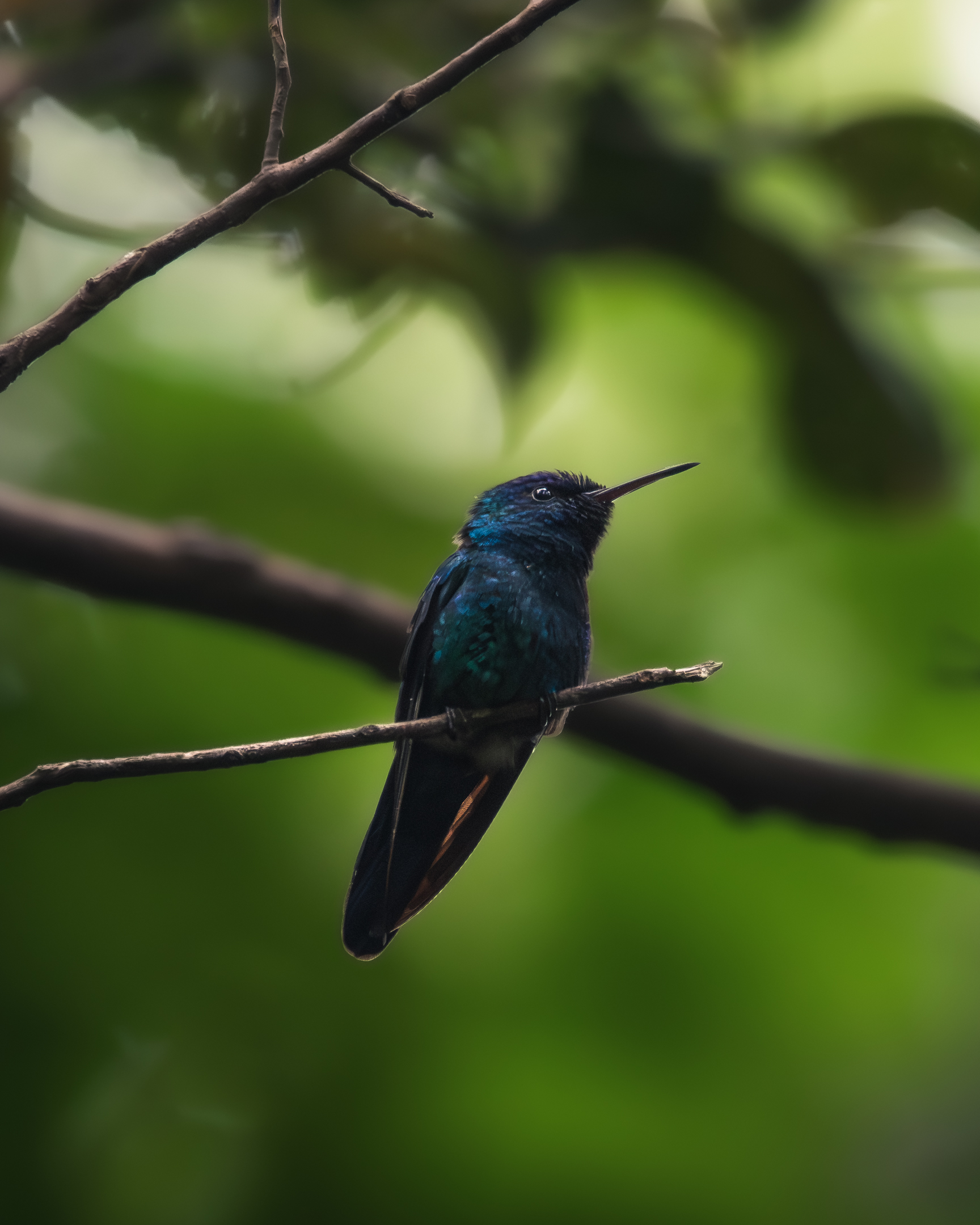
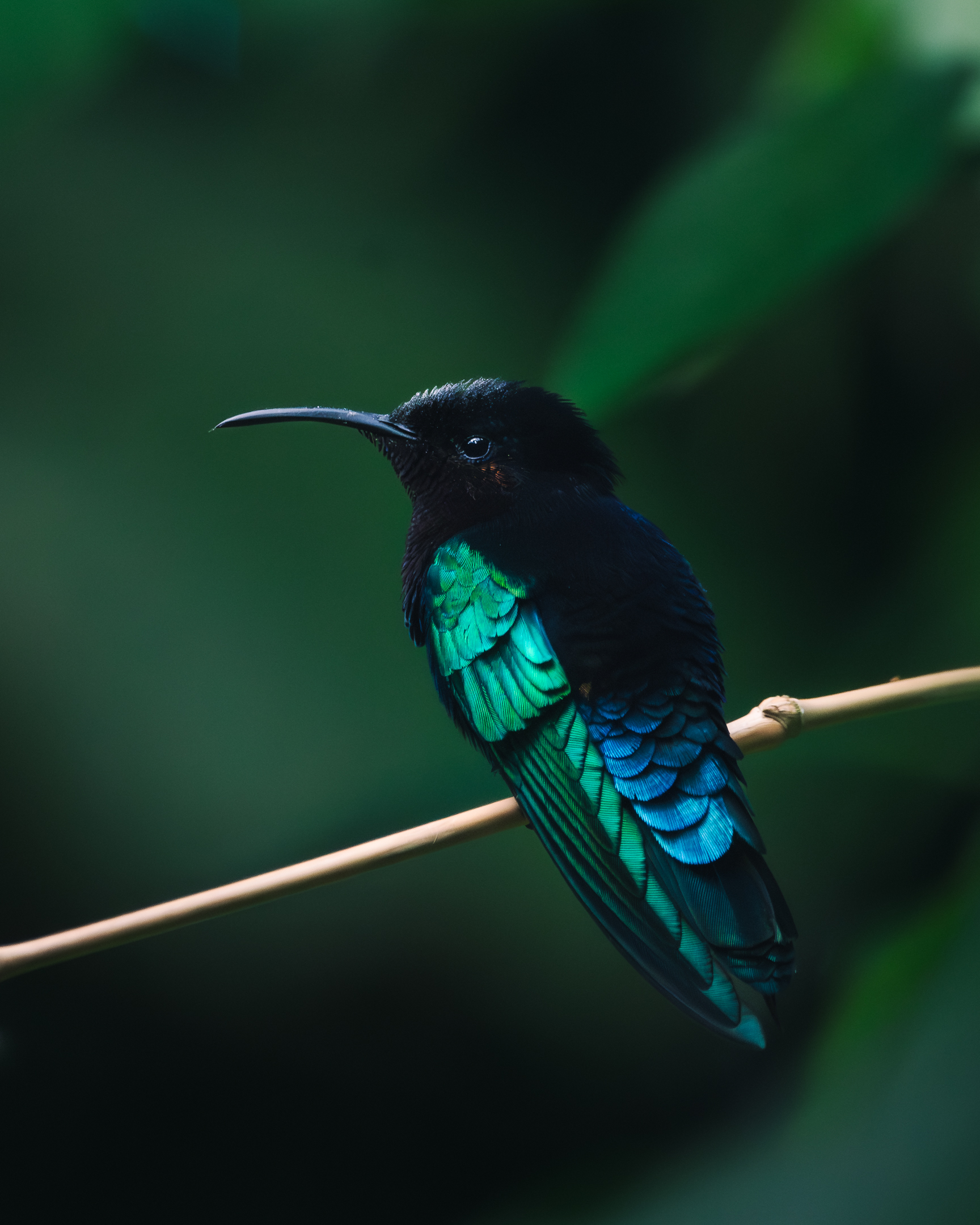
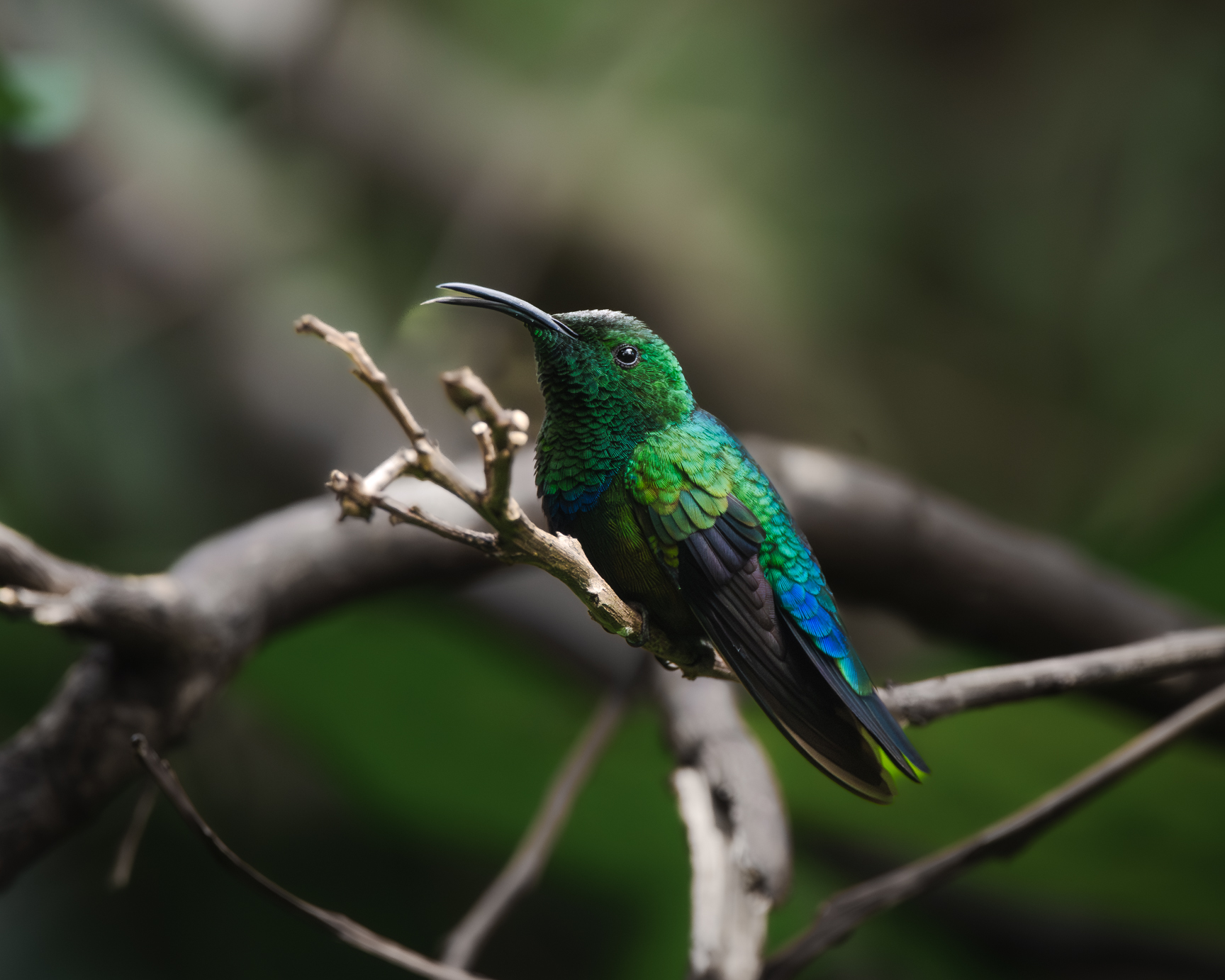
Dominica is popular with bird watchers, especially the Syndicate Nature Trail in the Morne Diablotin National Park. It is arguably the best birding trail on the island. And there is no one better to guide you around the area than the legendary Dr. Birdy. A storied ornithologist and expert naturalist, his knowledge of the island is encyclopedic. From spotting Blue-headed hummingbirds in the dense forest canopy to handing us leaves from the island’s various spice trees to smell, a walk in the jungle with Dr. Birdy is a journey through the natural history of Dominica.
His tours are highly in-demand so booking early is essential. We booked a tour with him through our hotel more than a month in advance. It was pure luck that he had one day available during our stay. If I could recommend one thing to secure a reservation for, this would be it. And just maybe you’ll get lucky where we did not and spot a Sisserou or Jacko parrot – the elusive, endangered birds found only on Dominica!
Hike to Boiling Lake
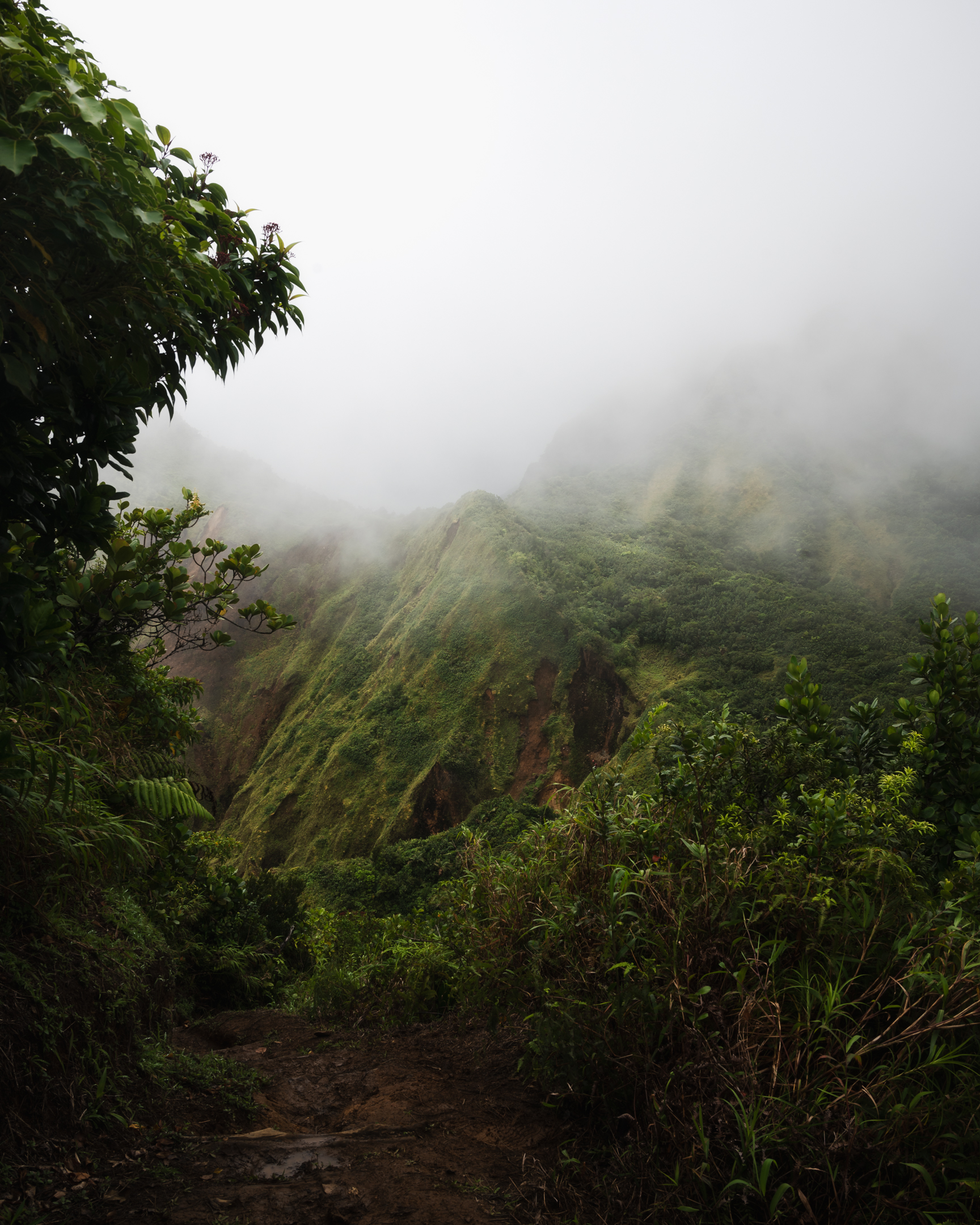
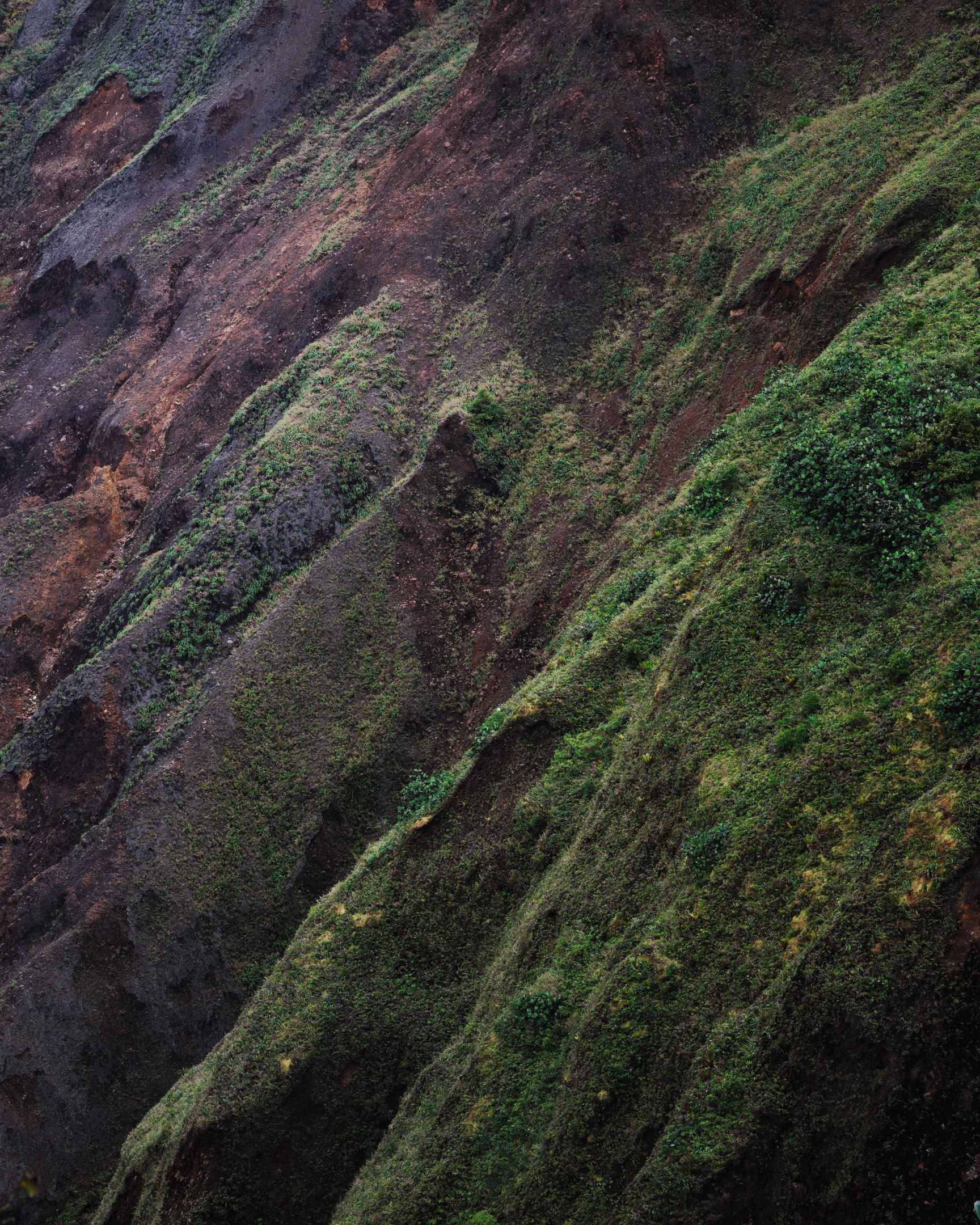
Hiking to the world’s second largest fumarole is touted as one of the best things to do in Dominica. I’ll preface this by saying we started the Boiling Lake Hike but did not finish it. People aren’t kidding when they say it’s one of the most demanding hikes on the entire island. Aside from the fact that we started the hike too late (around 8 AM) without a guide and me without the proper footwear, the clincher was the rain. According to reviews, the trail is muddy on a good day. In the rain it’s insanely slippery, dangerously so since it’s hard to spot the slickest parts. And steep doesn’t even begin to describe the grade of the trail. Almost vertical – upwards of 30% in some spots – the terrain is rough requiring quite a bit of scrambling and boulder climbing.
But steep terrain, poor preparation, and awful conditions aside, the views throughout the hike are unreal. From fog rolling through verdant peaks to otherworldly volcanic landscapes, it’s easy to see why the trail is so popular. To avoid making my same mistakes, start the hike early – locals recommended heading out around 5 AM. Proper footwear is essential – wear hiking boots, not sneakers. Weather can make or break your experience – reconsider going if it is raining.
If you are unfamiliar with the terrain or aren’t an experienced hiker, seriously consider hiring a guide. If I did this hike again, I would do it with a guide. And make sure you have plenty of water. Don’t let my experience deter you, with proper preparation (and a little favor from the weather gods), the hike to Boiling Lake is truly spectacular.
Explore the island by car
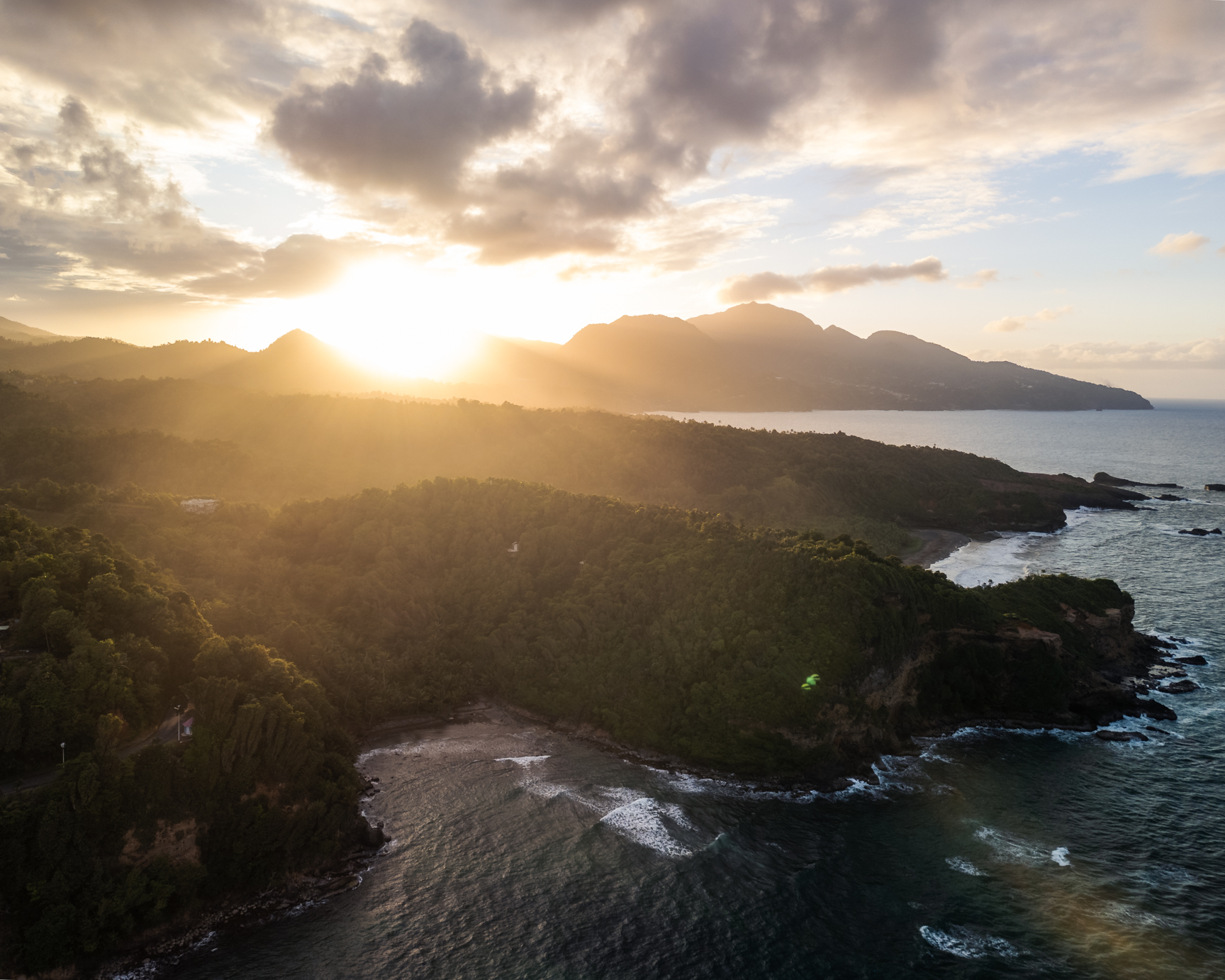
I know I went on and on about how challenging driving is in Dominica but I still think it’s the best way to see the island! There’s nothing better than journeying off on your own with no plans other than to see where the day takes you. With only 940 miles of roadway (about half is paved) that runs primarily along the coast and river valleys, you can cover a fair bit of ground in a couple of days.
Drive up Scotts Head for phenomenal views of Soufriere Bay at the southern reaches of the island. Wander the sinuous roads along the eastern coast to glimpse black sand beaches and towering verdant cliffs that plunge into a roiling Atlantic Ocean. Catch golden hour from Cold Soufriere – or any roadside pull-off along the western seaboard – and watch the Caribbean sun gild the entire landscape before dipping below the horizon. Not wanting to drive after dark, we tried (and often failed) to be back in Portsmouth before the sun set. Though we didn’t cover as much as we wanted, we were able to stop and explore at our own pace. Sometimes the best plan is no plan at all.
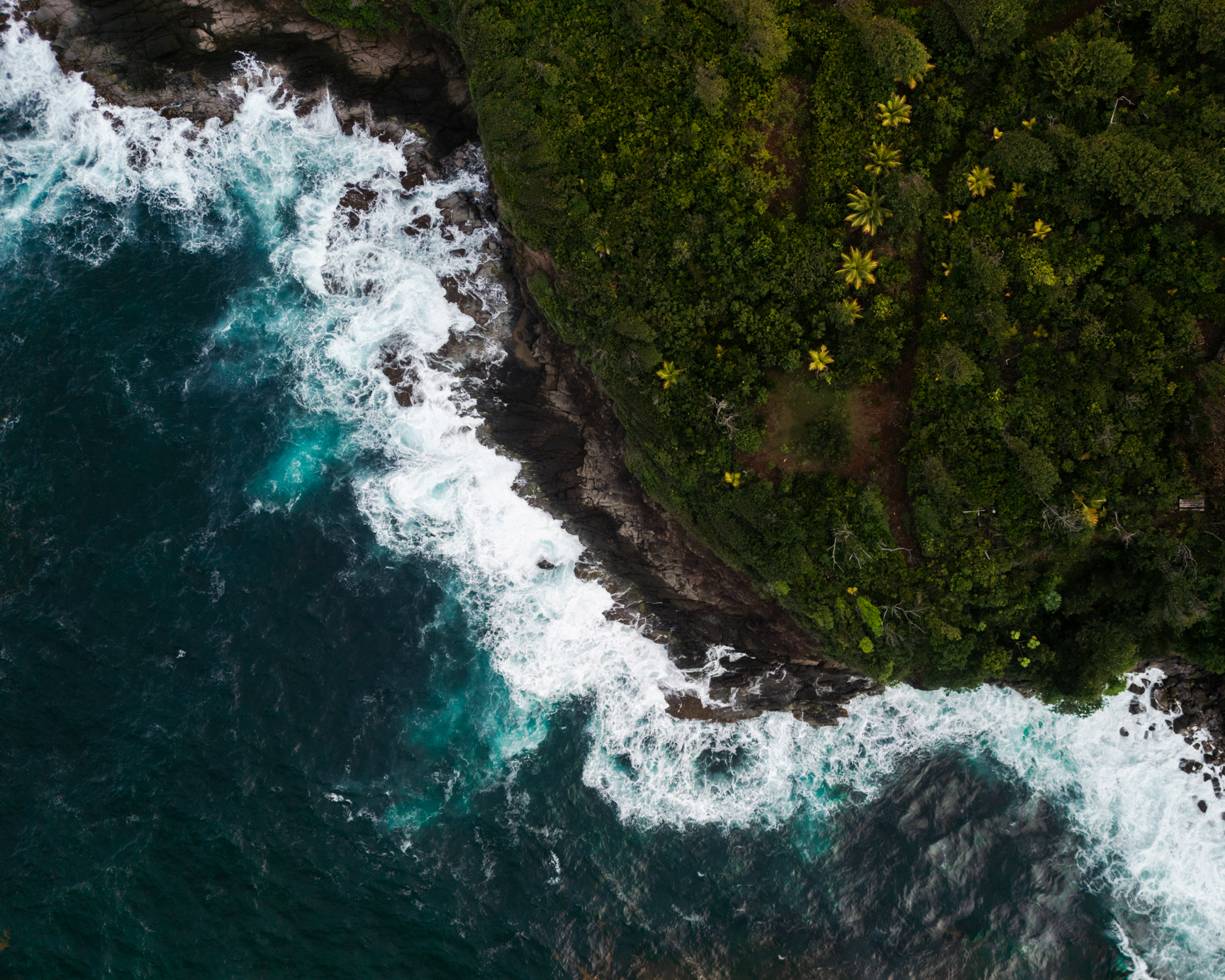
Visit the Kalinago Territory
The Kalinago Territory is located on the northeast coast of Dominica overlooking the Atlantic Ocean. Populated by descendants of the island’s indigenous people, the Kalinago represent the last remaining tribe of pre-Columbian Carib Indians. Once widespread across the islands of the Caribbean, centuries of colonization have relegated the remaining 3,000 members of the Kalinago to a mountainous 3,700-acre territory on Dominica.
Of the 8 villages of the territory, Barana Auté – the Kalinago model village – is specifically designed to welcome tourists. After paying the entry fee, you’ll be escorted around the compound by a Kalinago guide. Though the tour is brief, it is jampacked with insights into Kalinago culture and way of life. From learning about medicinal plants and its governing body to the future of their community, a stop here is an educational way to spend an hour or two. The tour ends at the modest gift shop. Full of beautiful handmade crafts like woven baskets that the Kalinago are well-known for producing. If you want to buy a souvenir, you should get it here!
Get out on the water
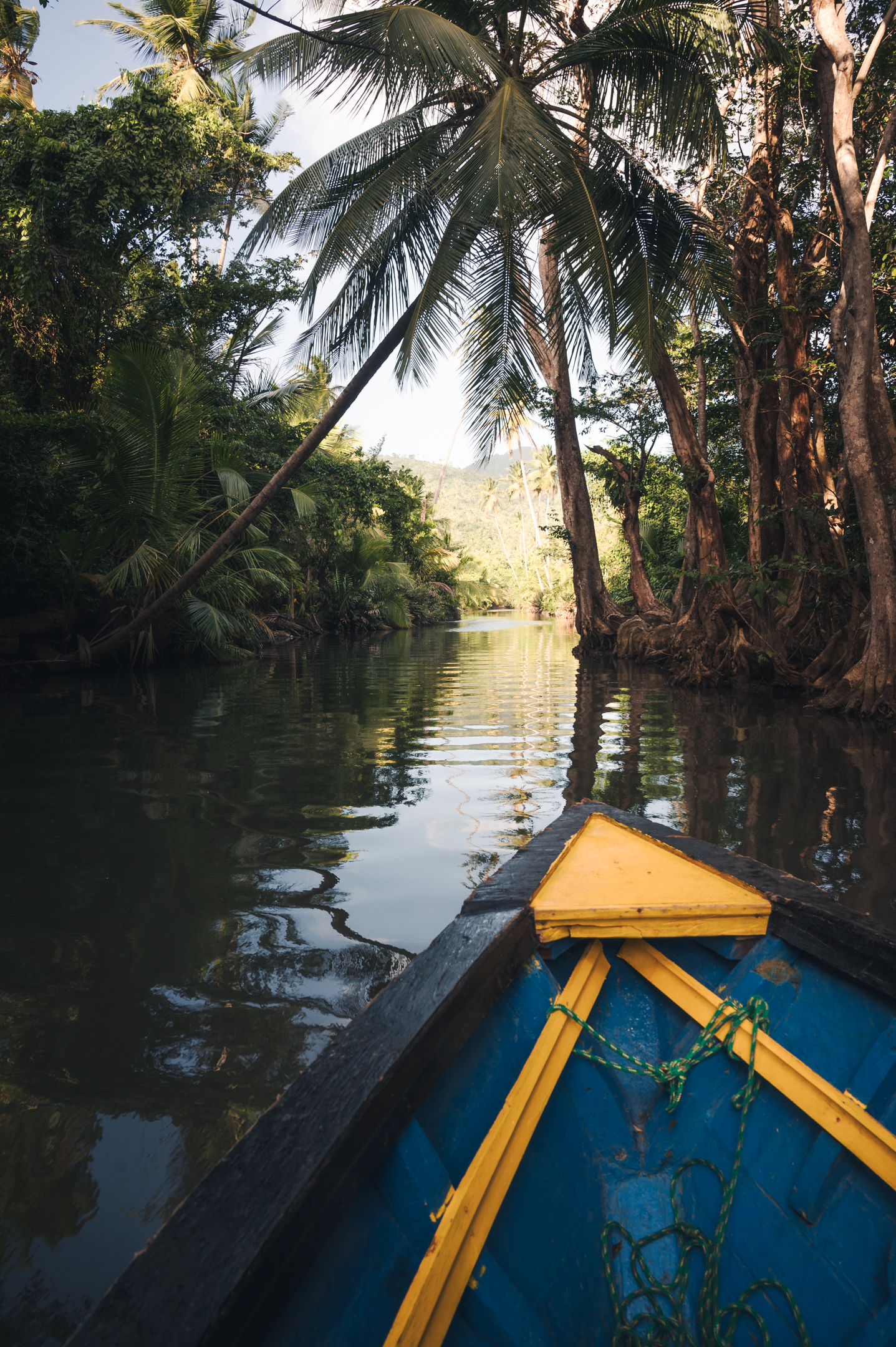
Surrounded by the Caribbean Sea and with 365 rivers (one for each day of the year!) flowing across its mountainous landscape, Dominica has no shortage of water. With so much to explore, it would be a shame not to partake in as many aquatic adventures as you possibly can. Pristine and electric blue, the waters around the island harbor exquisite coral reefs, some of the best in the Caribbean. The bubbly shallows of Champagne Bay in particular are said to be breathtaking – perfect for snorkeling or scuba diving!
Deep sheltered bays along Dominica’s western coast provide ideal breeding grounds for sperm whales. It is the only place in the world where they can be found year-round. If you’re lucky, maybe you’ll spot one on a whale watching excursion offered on the island (we weren’t so lucky!). But if watersports and bumpy boat rides aren’t your style, consider a sedate journey down the Indian River to a local bush bar. Is there anything better than a relaxing drink and the sound of palms swaying in the breeze?
Chase epic waterfalls around Dominica
When most people think of the Caribbean, they don’t imagine lush jungles and gushing waterfalls. In that regard, Dominica more closely resembles other volcanic islands – Kauai immediately comes to mind – than its white sand beached neighbors. With 12 verdant waterfalls and countless cascades, waterfall chasing should be at the top of your Dominica bucket list.
Journey beyond the easily accessible Emerald Pool and Trafalgar Falls – though you should visit those too – because the hidden gems off the beaten track are the best by far. Visit Victoria Falls, one of the most unique spots on the entire island, its mineral rich, milky blue water a sight to behold. Syndicate Falls is a laid-back hike, perfect after a long day of birdwatching at the nearby Syndicate Nature Trail. Or get your waterfall fix while canyoneering in Titou Gorge, one of Dominica’s most popular adventure activities.
Located on private land, some waterfalls like Salton Falls, Jacko Falls, and Spanny Falls require a small fee to enter. A few hikes are quite challenging. Locals and websites alike recommend hiring a guide for Victoria Falls, Middleham Falls, and Sari Sari Falls. Your hotel can connect you with someone though many of the guides who go to Boiling Lake can also take you to the waterfalls.
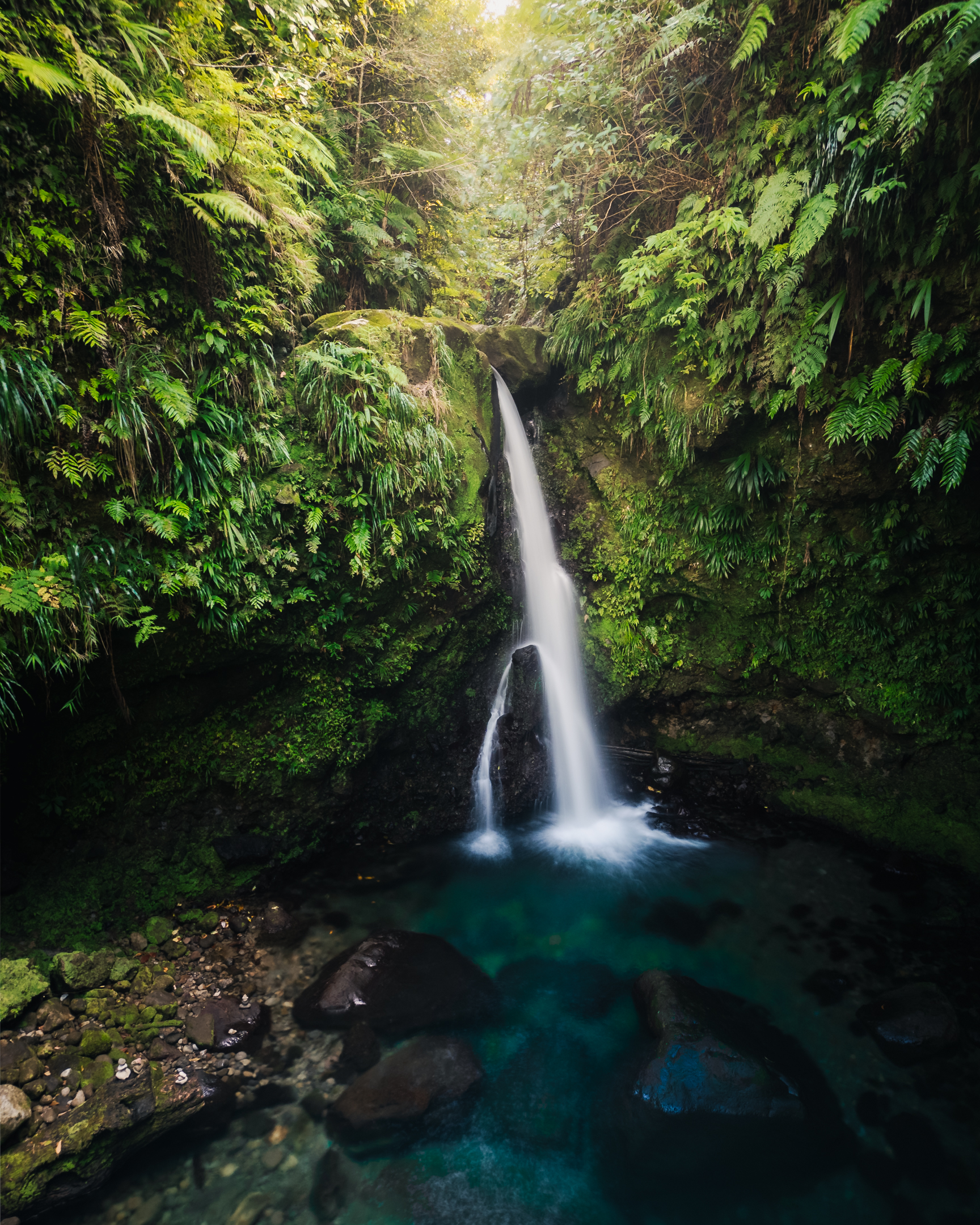
Savor the local cuisine
Dominica has incredible food. A mixture of African, French, English, and indigenous Kalinago influences, Dominican cuisine is similar to that of nearby islands. Tropical fruits, fresh caught seafood, and locally made rum are some of the island’s highlights. Whether you’re looking for a casual post-hike nosh or a swanky spot for a night out, Dominica has something for everyone.
Swing by Keepin’ It Real at sunset for grilled lobster and rum punch, served al fresco in a hut perched over the beach. Make a pit stop at Zeb Zepis Bistro for outstanding farm to table dishes that will revive you after a morning of chasing waterfalls nearby. Grab a nightcap at the RumFire Bar in The InterContinental Dominica Cabrits Resort (it’s open to non-guests!) and marvel at the 50+ flavors of rum scattered throughout the bar.
Be sure not to miss the roadside stands as you wind your way around the island. Pick up passionfruit and apple bananas to snack on as you drive or while watching the waves from a roadside pull-off. Try local juices like sorrel or sugarcane, freshly pressed and absolutely delicious.
Our favorite meal by far was in Roseau. A hidden gem tucked in the historic Melrose House, Lacou is the perfect spot for a leisurely dinner. The menu is seasonal and oft-changing with a curated wine list and creative cocktail menu. We sipped sorrel spritzes and snacked on mahi mahi ceviche and smoked fish accras before devouring our braised goat and marlin schnitzel entrees. Though full and fit to burst, we couldn’t turn down dessert, a banoffee pie that is still the best I’ve ever had.
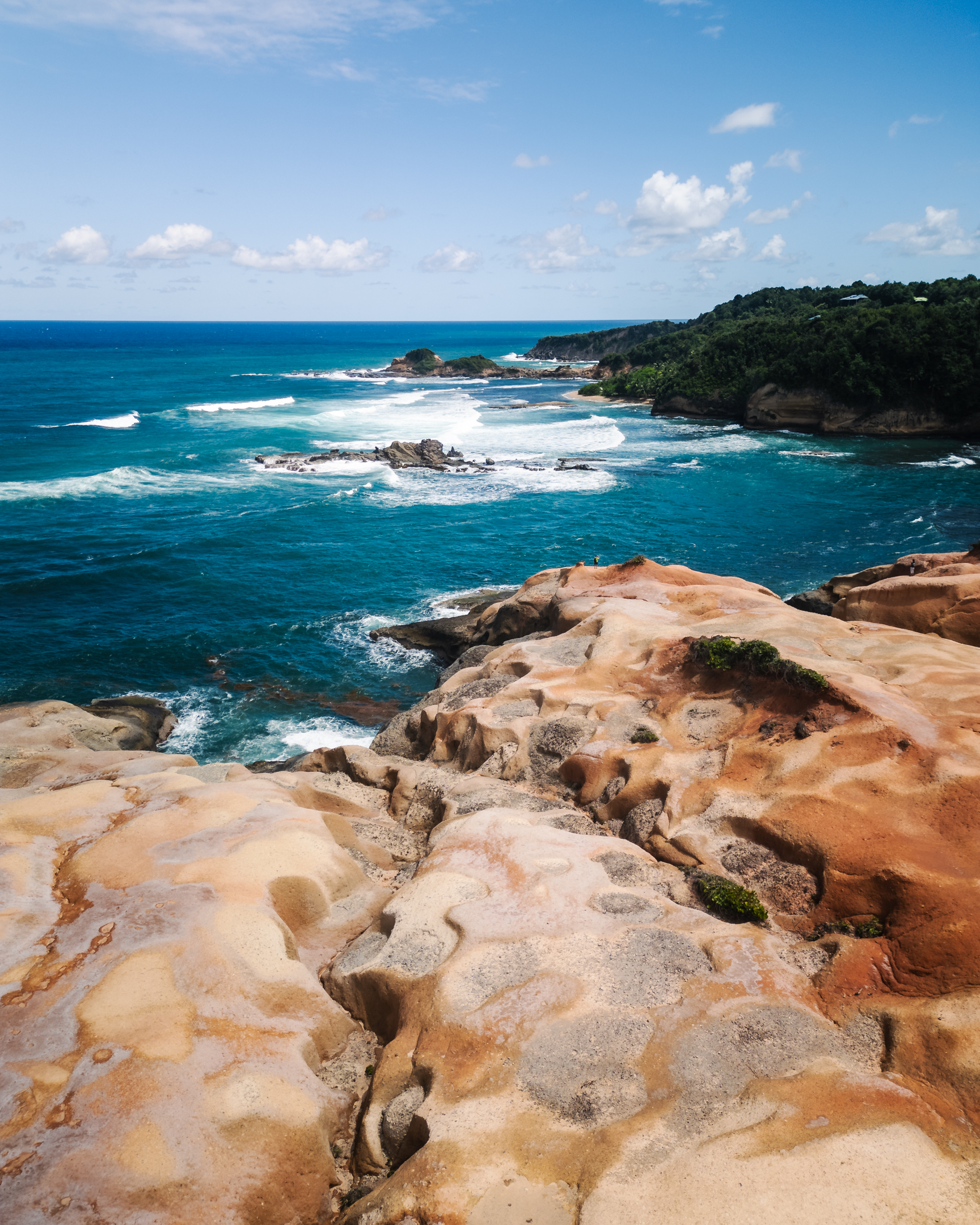
Know Before You Go to Dominica
Planning resources are scarce
No one was more surprised than me that our trip to Dominica was the toughest I’ve ever had to plan. Finding recommendations for things to do and where to eat/stay was relatively simple. However, finding tour operators and trying to book activities was unexpectedly difficult. Absent were the simple online tools that let you reserve and pay for an activity. Reservations are made only by phone or email, if they’re required at all.
The Discover Dominica website was the best source of information I found. It ended up being my most used planning tool! From diving outfitters to birding tours to hiking guides, the Dominica tourism website provides an impressive amount of information. Dominica is one of the only places I’ve ever been where you could go with nothing pre-booked. You can arrange almost every activity once you touch down on the island, which leads me to my next piece of advice…
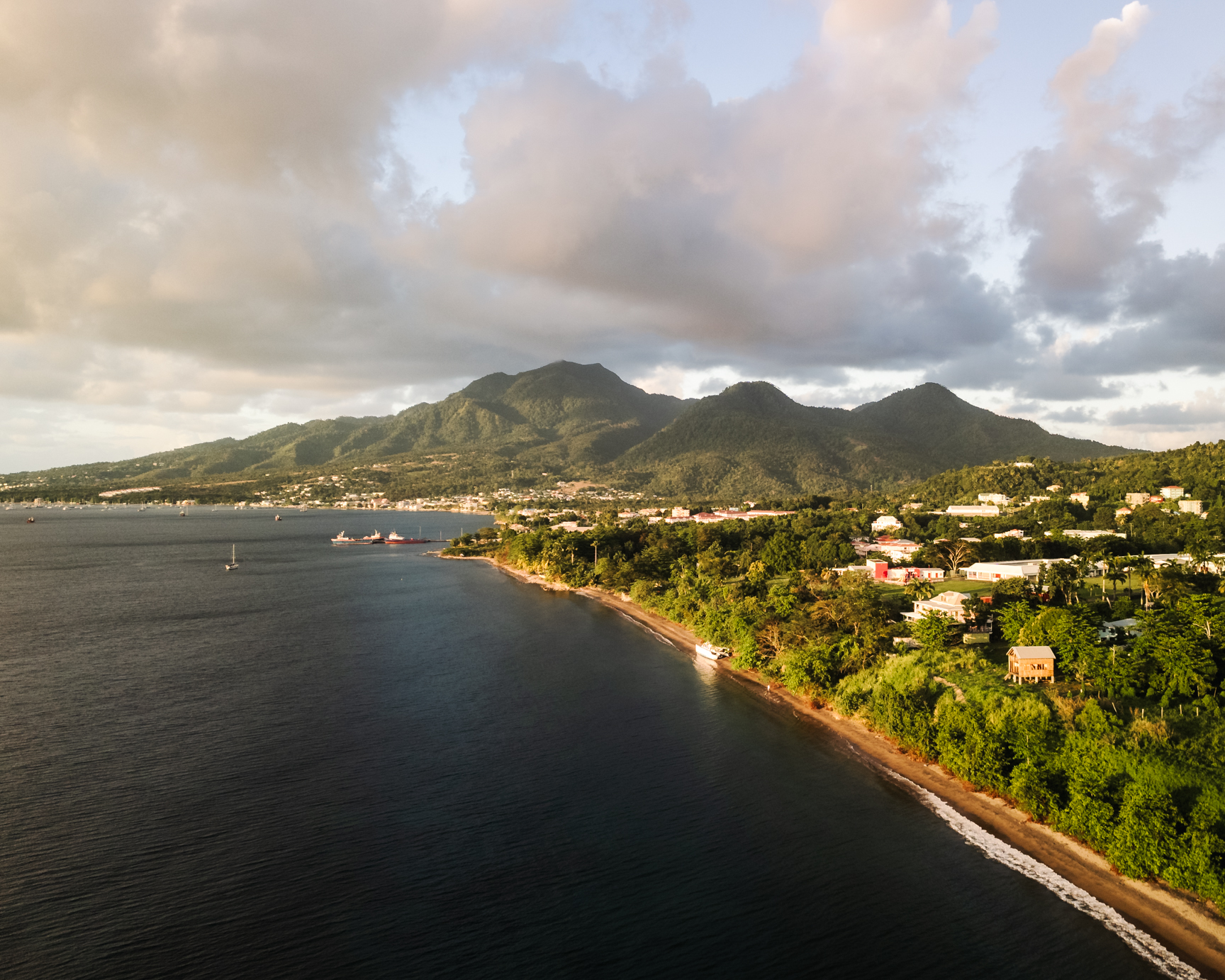
Ask the locals
Dominicans have a reputation for being friendly and welcoming. Whether you’re lost, looking for a guide to take you to Boiling Lake, or need a restaurant suggestion, you’ll never go wrong if you ask someone who lives on the island. Everyone’s got a guy, as they say. Or they know a guy who knows a guy. Everyone is happy to pass along a name or point you in the right direction.
Bring cash
Aside from meals at bigger establishments, most transactions on Dominica will require cash. But fear not, US dollars are widely accepted! You’ll usually get Eastern Caribbean dollars (XCD) in return so don’t feel the need to bring it with you. If you’re not comfortable bringing all the money you’ll need while on the island, just be aware there aren’t many ATMs outside of Roseau. It might be a challenge to find somewhere to withdraw cash later on.
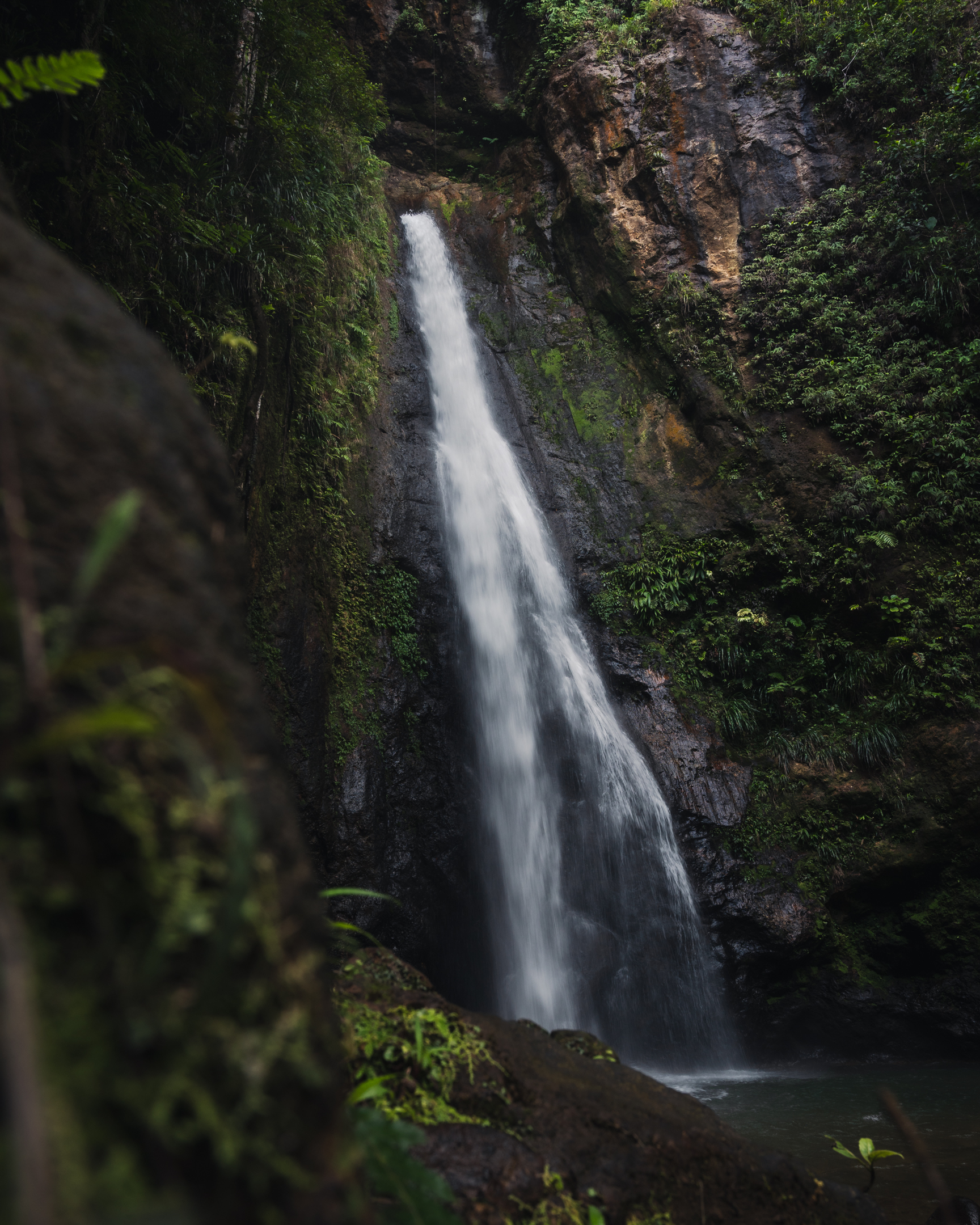
Check the port schedule
If you travel to Dominica during the high season (November – April), you’re sure to see a cruise ship if you pass through Roseau. On port days, not only are attractions like Emerald Pool and Trafalgar Falls jam-packed with tourists visiting the island for the day, traffic in and around Roseau is bumper-to-bumper, with tour operators and taxis pouring into the city to make their pick-ups. If you can swing it, visit popular sites on a day when there’s no cruise scheduled to be in port. You can check the port schedule here. Parking will be a breeze and you might have the place all to yourself!
Reconsider driving in Roseau
Of all the stressful driving circumstances we encountered in Dominica, navigating Roseau was the worst. Aside from the usual narrow streets – many of which are one way – there are hundreds of vehicles to contend with. Squeezing through parked cars with mere inches to spare while dodging pedestrians was an experience I never want to repeat. We made the mistake of trying to find parking near the port for our whale watch (there is none) and got stuck in a morass of cruise passengers, market stalls, and port security. We ended up finding a spot at the top of a steep incline almost a mile away and had to hustle back into town to get to the ferry terminal on time.
If you are going to drive in Roseau, figure out where you’ll park in advance. Don’t forget to factor in time to walk to your destination. Or consider taking a taxi and avoiding the experience altogether.
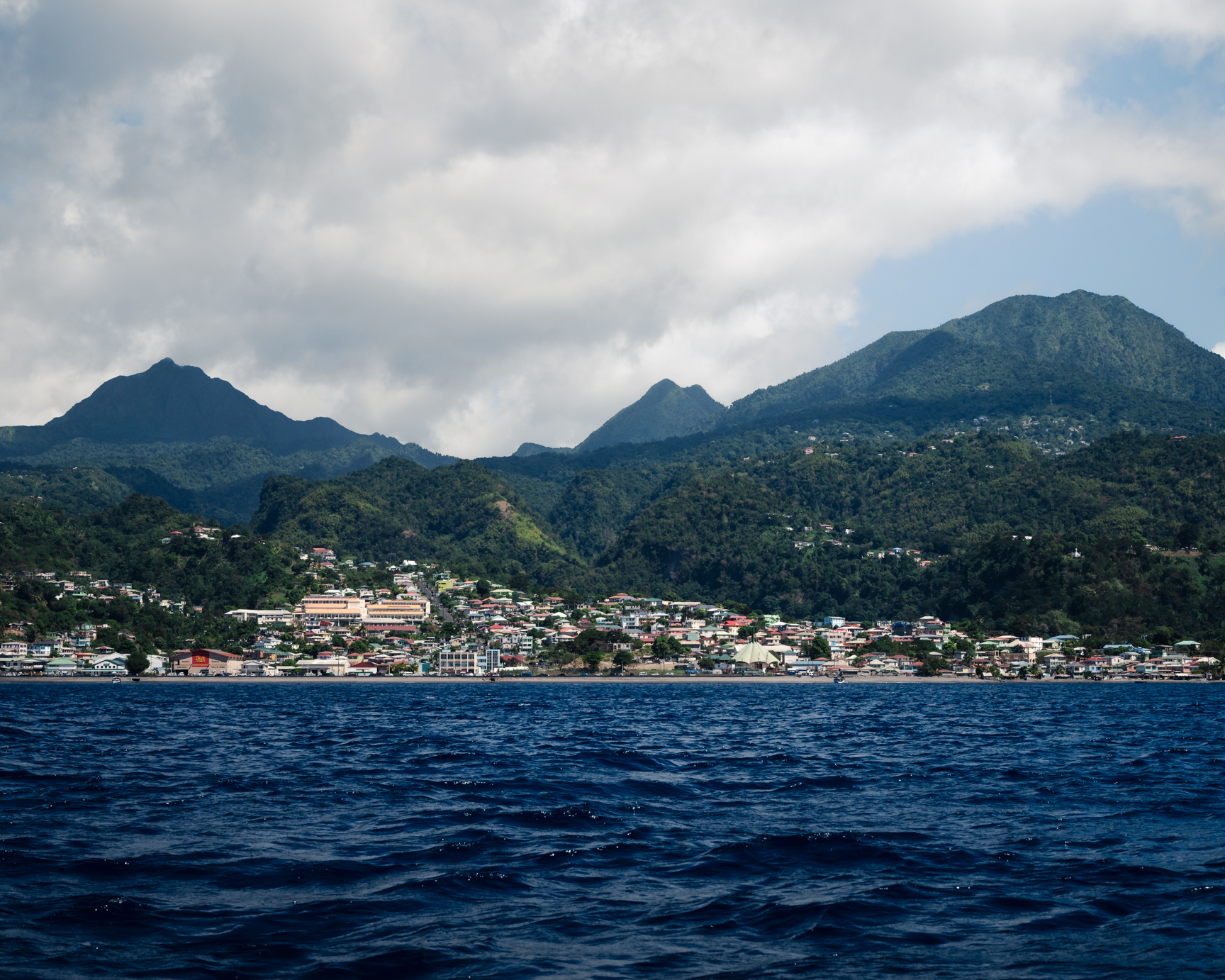
Be realistic about your itinerary
It’s easy to overestimate how much you can do in a day in Dominica. While destinations might be close geographically, the time it takes to drive between them can be considerable. Between the terrain and condition of the roads a distance that takes 20 minutes to cover on a highway takes twice as long in Dominica. Factor in parking challenges, long wait times, and last-minute changes in plan and you might not have as much time to explore as you originally thought. Flexibility and an easygoing attitude are key to enjoying your time in Dominica!
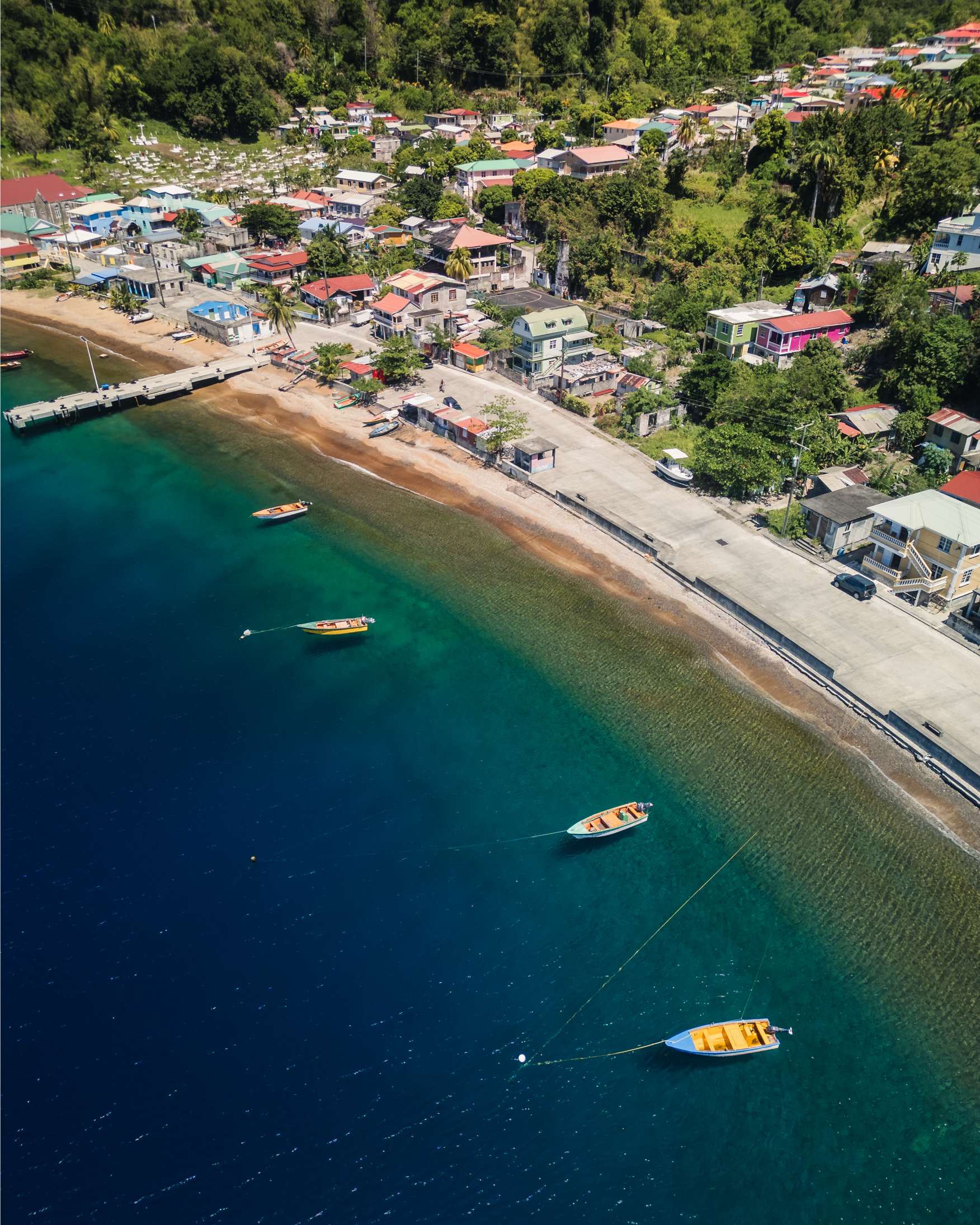
I hope this travel guide has given you inspiration and ideas to plan a trip to Dominica. Whatever draws you here, whether it’s a relaxing vacation or an adventure-packed escape, the raw breathtaking beauty of Dominica will blow you away!